Camping through fabulous Romania: 6 days of adventure!
Ever since we started going to the country's mountain trails as often as possible, we've been thinking about what it would be like to take a vacation through Romania, but sleeping in campsiteinstead of the hotel rooms. So slowly, we gathered the basic equipment and one day we hit the road.
This article is about a different way to visit our country, to discover more hidden places and to show that Romania is also very friendly to this type of traveling. I invite you to read it, to save it because, who knows, maybe I can convince you to give a try to camping life.
Basic equipment
Because we are really big fans of Decathlon, most of our equipment is bought from them. And I assure you, you'll find absolutely everything you need at their store. We have a set of cooking utensils for two, with mugs, plates, cutlery, a frying pan, a larger pot and a kettle. For coffee, we use the macchinetta, so the kettle stays for tea.
We have a 3-person tent with a porch bought from 4camping because we felt we needed the extra space for the small luggage that could fit inside the tent and the porch is the entrance to our little house. The mattress is two person and inflates with a foot pump, and the two sleeping bags are up to 10 degrees, all bought also from Decathlon. Bonus, we also have a tarp to put over the tent in case of really bad weather.
Moreover, we have two chairs, a table, two coolers with frozen pills, cooking utensils, warm lights, head torches, solar-powered lights and a hammock. And always good cheer!
General 6-day itinerary
The chosen period was July 25-31, and Maramureșul and Bucovina were the two areas we really wanted to see. So we created this itinerary based on the north of the country. July was perfect for such a trip, it only rained one night, and because we were far south where the heat was extreme, we had the perfect temperatures.
In order to follow our route more easily, I made a map by days with the campsites and all the sights we visited, which I will present more detailed below. We drove a total of1790 km and we practically covered most of the country.
In short, our itinerary went something like this: Calafat - Iabalcea village, Caraș-Severin county - Gârda de Sus, Alba county - Săcălășeni village, Maramureș county - Fundu Moldovei village, Suceava county - Bucharest.
Poti vedea pe harta unde sunt pozitionate camping-urile:
Itinerary by days
Day 1 - campsite La Sălașul Fermecat
Our starting point was Calafat, Dolj county. The campsite chosen for the first night was La Sălașul Fermecat from Iabalcea village, Caras-Severin county. We drove there in 4 and a half hours, about 330 km.
On the way to the campsite, we stopped to visit Bigar waterfall and Carașova lavender field. Both spots were worth stopping and taking a little nature walk. Even though the lavender had partially dried, we were glad to have discovered such a place and that it was just the two of us.
If we had more time, however, I would definitely have chosen to go near the town of Anina, to Viaductul Jitin, when the train passes between Anina and Oravița. The Oravița - Anina line is said to be the oldest mountain railway in Romania, ranking 2nd in Europe. Also, if you stay 2-3 nights in the area, you can chose to see the trails and waterfalls in the National Park Cheile Nerei - Beusnita..
Before you get to the campsite, I recommend you do some shopping because the village of Iabalcea is very small, and apart from a very basic grocery store, we didn't find anything. To reserve a place in the campsite, we just called the number found on Facebook a few days before, but it wasn't necessary. At the time, we were the only ones with the tent and there was another German couple staying in the cottage.
The camping area is very large, a huge fruit tree yard with room for everyone. In the cottage I don't know how many rooms there are or what their rate is. Right next to the cottage, at the entrance, there is a dining area, a barbecue, a sink for washing dishes and a toilet. On the opposite side is a very rudimentary but authentic shower, with water from a cauldron heated by the sun. The price we paid was 15 lei/person and 10 lei for the car.
Day 2 - campsite La Dănuț
The next day we went further north to Alba county. The final destination was campsite La Danut, from the village of Gârda de Sus. We drove another 4 and a half hours, about 280 km. We would have liked to somehow reach Timișoara, but we would have gone a long way around and we didn't want to spend all day in the car. Instead, we took the Vârtop – Arieșeni route where we stopped at various view points over Apuseni Mountains.Right on the road, we saw the trail sign to Groapa Ruginoasă – Valea Seacă so we stopped to see this place.
According to internet searches, in short, Groapa Ruginoasa "is a ravine over 600 m in diameter and 100 m deep, formed by very active erosion". What makes it special is that more and more rusty soil is being deposited as a result of the rains, and the sinkhole is getting bigger.
To get to the start of the trail from the DN75 near Vârtop, there is a sign and a small parking area. As soon as you cross the stream, the climb through the forest begins on a well-maintained road, where here and there there are stone steps and handrails for extra safety.
After a 40-45 minute climb, you reach a clearing where you can continue on to other trails in the area, and the beautiful view open ahead Groapa Ruginoasă. Extreme caution is required as there is no fence for protection and the ground is fragile right at the edge of the precipice. The way back is the same but takes about 20-25 minutes. We did the mini trail near sunset and caught the rusty colours much more pronounced.
There are many things to do in this area, many trails in the Apuseni Mountains, The Glacier Cave at Scărișoara, the road Transursoaia. Only here I think we could have spent 5 days and not been bored.
Now about the campsite: as far as I remember, we didn't call for reservation in advance, but when we arrived, we paid for the night spent there, 60 lei/2 persons. The campsite is very big, it can fit a lot of tents and campervans, it's very beautifully located between the mountains and with a stream right next to it. As for facilities, there are 4 toilets at the far end and two sinks for dishes, and at the entrance, another 4 toilets, two showers, sinks for dishes, washing machine, barbecue and common area.
Here too, I recommend shopping for grocery ahead of time, you may find small village shops for quick supplies, but they usually don't have a lot of products.
Day 3 - campsite Noroc
On the third day, we set off for Maramureș and drove 270 km in 4 and a half hours to campsite Noroc. We would have liked to have found a place in the village of Breb, even closer to Sighetu Marmației, but we were very happy when we chose this campsite and you will understand why.
From the previous campsite, we drove through Apuseni Mountains, through Ursoaia Pass, and the first stop was Valul Miresei Waterfall.We drove along the forest road for quite a while, until we reached the sign prohibiting further driving. From here, it is about 1km to the waterfall, on a very easy forest road, more of a nature walk. The waterfall is at 1000m altitude and is impressive, especially if it rains and the water flow is higher. The hike took 30-40 minutes round trip and although it is not a proper trail, it is a really worthwhile place to visit and spend time in nature.
There is a legend about this waterfall: "it tells of a young girl from a nearby village who was to be married against her will. In love with another man, she fled to the mountains on her wedding day but was found by her family. In desperation, the girl threw herself off the cliffs, her veil hanging between the rocks. The water cascading over the bride's veil symbolizes the tears of those who have lost their love."
Being about an hour away from the campsite, we found another very interesting place that we didn't know about Gods Garden, a geological nature reservation. The area is very well landscaped, with a large parking lot and a terrace, and the route is circular, marked with red dot ![]() . You climb very slightly through a small forest and then out into the clearing, where you'll see the rock formations for which this garden is recognized.
. You climb very slightly through a small forest and then out into the clearing, where you'll see the rock formations for which this garden is recognized.
They have been shaped by rain, erosion and other weather phenomena and over the years have come to look like this. The best known are Zmeul and Zmeoaicabut there are plenty of them in the park, and each one has an information board with its name. From this grove, you go down and past these formations, where there are other small caves. Because we didn't know about this garden, we arrived at sunset and just went up into the grove and back to the car, so we didn't make it back down by the rocks. It was just the two of us and it was getting dark.
For this campsite, we had to book our spot a couple of weeks in advance, using the contact page on the the website. The price was 40 lei/night/person and we stayed two nights. The campsite is not very big, it's perfect not to get very crowded, because even the hosts are careful not to accept too many people. They have plenty of spaces for motorhomes as well as tents, a large garden for relaxing, two toilets, two showers, two sinks for dishes and a dishwasher.
I really liked the attention in terms of the area for the necessities, and in the courtyard there is a little house from the Maramureș area, very old and relocated there. I liked the fact that we were the only Romanians there and the rest came from all over Europe to visit Romania, this campsite being the starting point. The hosts were also extraordinarily welcoming and wanted to help everyone, waiting for us with open arms even though we arrived at 9:30pm.
Day 4 - tourist attractions Maramureș
In the morning we arrived at Blue Lake, which is 20 km from Campsite Noroc. We wanted to catch it as much as possible without many tourists. The trail is not hard at all, again a gentle walk through nature. And the colour of the lake is very nice, but it depends on the light. We caught it more green than blue, but it was very beautiful.
Then, we visited the town of Sighetu Marmației, where we reached the well-known nail, a bit through the city center and the Memorial to Victims of Communism and Resistance. After a big lunch, we drove further to Săpânța, to Cimitirul Vesel, and on our way back to the campsite, we stopped at Barsana Monastery and we chose to walk through the villages of Maramureș to see the houses and entrance gates specific to the area.
Day 5 - campsite de Vuurplats
On day five, we drove 260 kilometers to the campsite de Vuurplats in about 5 and a half hours. We didn't visit anything else special, we just enjoyed the landscapes that the north of the country has to offer and on the way we also passed through the village of Ciocănești, which is recognized for its traditional patterns drawn on houses.
The weather wasn't good at all and we rushed to the campsite. Here again, we booked in advance by calling the phone number on the the website. The campsite is not very big here either, it won't get very crowded, the pitches are very well delimited, everyone has the necessary privacy. Right next to it was a yard with a few animals, two horses were more curious.
If you don't want to sleep in a tent, there is also a cottage that belongs to the campground, but I don't know the prices. For camping, we paid 25 lei/person/night, 20 lei for the car and 20 lei/cottage, and spent 2 nights here. The campsite has a common area for relaxing, children's area, two toilets and two showers, dishwashing sink and many other facilities for a fee. What I liked here is the common sense rule for quiet hours, no loud music and in general to respect other campers.
Day 6 - hiking trail Pietrele Doamnei, Rarau mountains
In Bucovina, there are so many places to visit, such as Suceava, Gura Humorului, Tara Dornelor, Putna Monastery, Voroneț. It's an area extremely rich in traditions and beautiful landscapes, with many trails, worth exploring several times.
With only one day left, and because it had rained in the morning, we had only half a day left and decided to make walk on the trail to Pietrele Doamnei. From the campsite to Hotel Alpin Rarău, from where the trail starts, it's only a 20km drive in 30 minutes. This road is also part of the mountain road Transrarău, also called the Treasure Trail, which lies at an altitude of 1400m.
The route is 2km each way and is signposted with blue cross ![]() from the hotel to the view point. It climbs from 1507m to 1631m and takes about an hour up and 40 minutes back. So it is not long either in time or distance. At the beginning you climb through the forest and it doesn't seem very difficult, and after 15 minutes you reach the rocky area that practically surrounds the huge cliff.
from the hotel to the view point. It climbs from 1507m to 1631m and takes about an hour up and 40 minutes back. So it is not long either in time or distance. At the beginning you climb through the forest and it doesn't seem very difficult, and after 15 minutes you reach the rocky area that practically surrounds the huge cliff.
The ascent continues on rocks, so trail boots with non-sticky soles are a must, and preferably not to walk after it rains as it can be dangerous. The scenery gets more and more beautiful as you climb. At some point we reach a junction where we can continue to the hotel or climb up to the plateau. Of course, we choose to go up to the plateau as we are here to see Pietrele Doamnei.
This section was the hardest on the entire route: the climb is done only on chains and requires a lot of attention. After 10 minutes, you reach the viewpoint, and the landscape is amazing: you can see the massive stones that make this route very famous and all around, 360 degrees, you can see the beautiful area of Bucovina. It's really worth the chained portion for a view like this.
From the plateau you have to go back along the chains, to the earlier intersection, from where you will start back to the hotel. The final road runs only through the forest and does not involve any major difficulty. Including the short stop at the top, we covered this route in about 2 hours. I saw a lot of children, but I also noticed people with very inappropriate shoes and it seemed dangerous to me.
Conclusion
Although the road to Bucharest was extremely tiring and took almost 8 hours, we enjoyed this week spent in the lands of Romania.As children, each of us had been to these areas before, on various vacations with our parents, but this time, we toured the country with a tent, to see these places with different eyes and years later.
The total cost of the trip was 2700 RON, including everything, from food, gas, nights at campsites and tickets, where applicable. We cooked a lot in the tent because it was part of what we wanted to experience. To track expenses on all our vacations, I use the app TravelSpend.
Personally, Noroc campsite was my favourite, maybe because it was the smallest, maybe because of the atmosphere or because of the authenticity and personality it had. But I also liked La Sălașul Fermecat campsite a lot because we were alone and it was the first night of the 7-day adventure. And the first night was promising, the whole sky being starry.
For us, this type of traveling is very relaxing, although it doesn't seem like it. We really like it and have become experts at setting up and taking down a tent in 15 minutes. We love the idea of sleeping outside, in the sounds of nature, watching the stars until late at night, drinking our coffee with great views and eating everything we cooked, all outside. At the same time, by camping, we discovered some hidden places in Romania, routes that we might not have known about before and a very beautiful community of people in tents or campervans.
I encourage you to step out of your comfort zone and try 1-2 nights in a tent or campervan. There is no need to invest in equipment, you can rent it to see if it suits you. For us, great trips followed in the following years, after this week with the tent, also in this style and I will tell you all about them here, on the blog. Stay tuned!

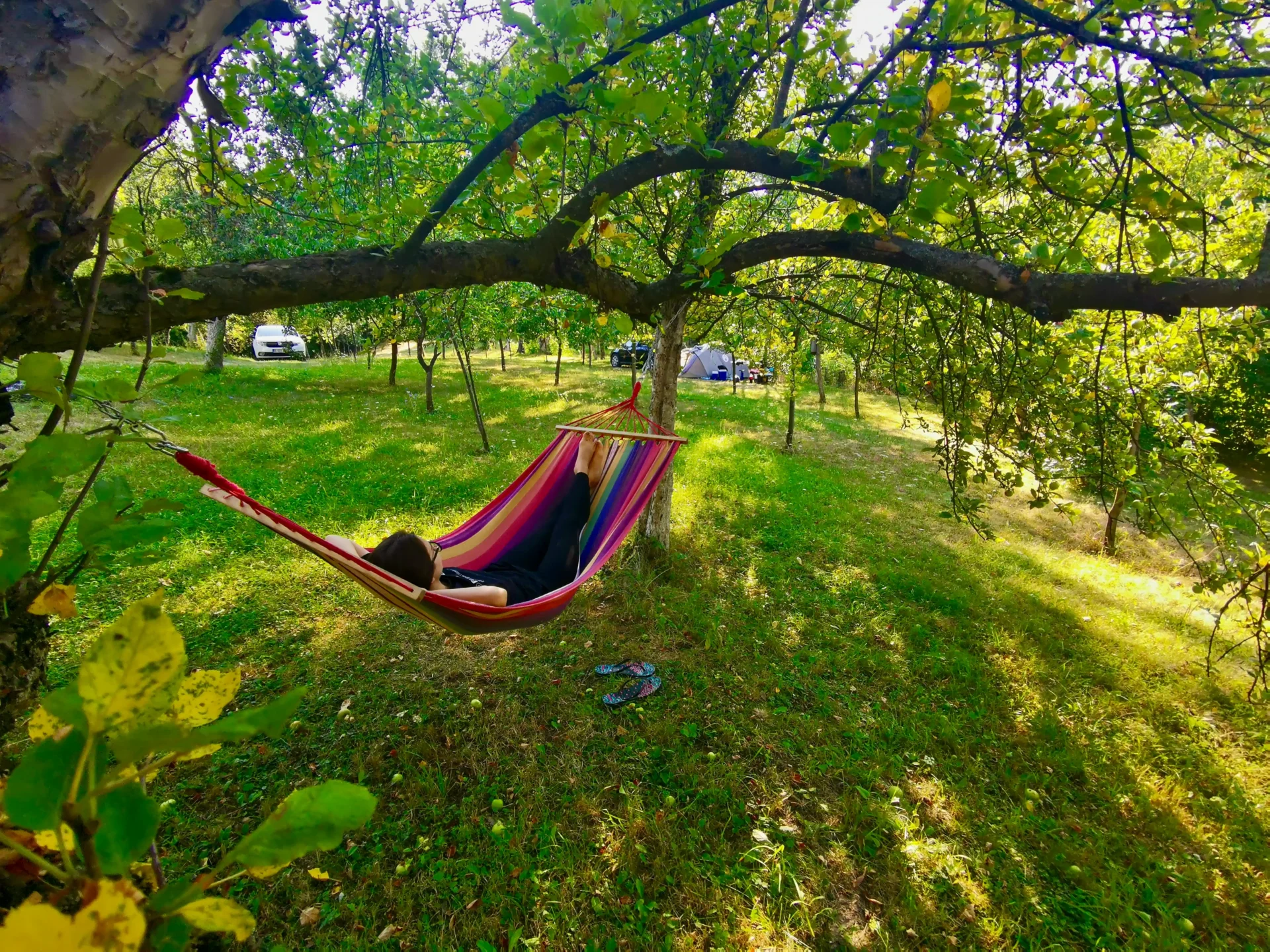
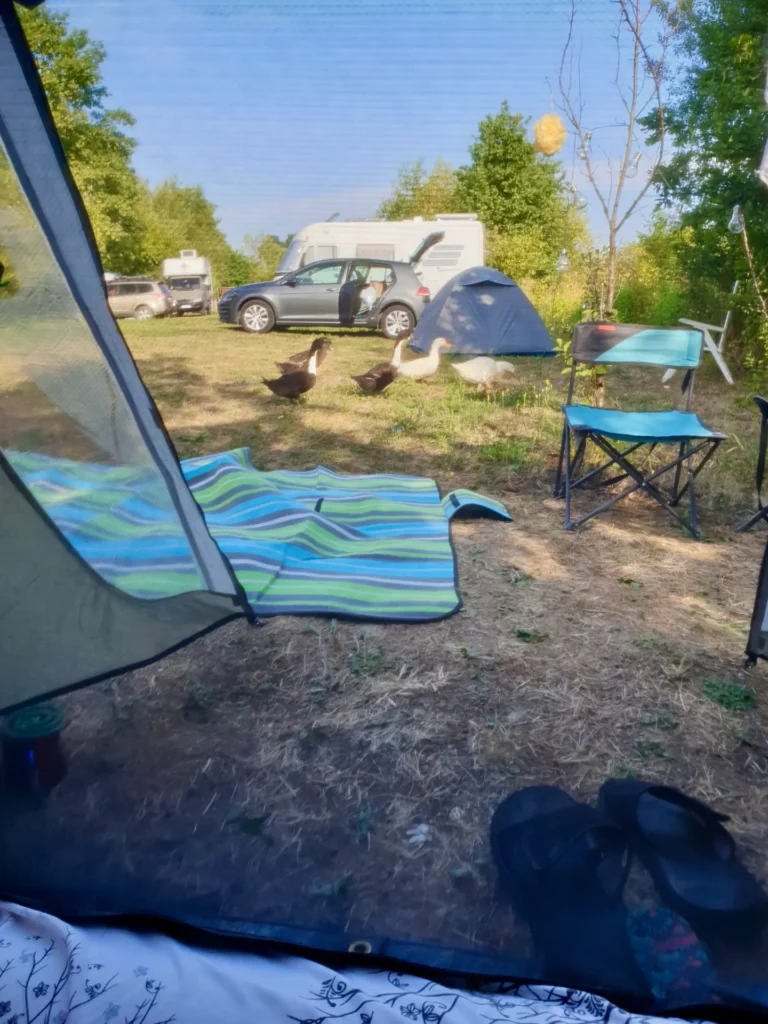
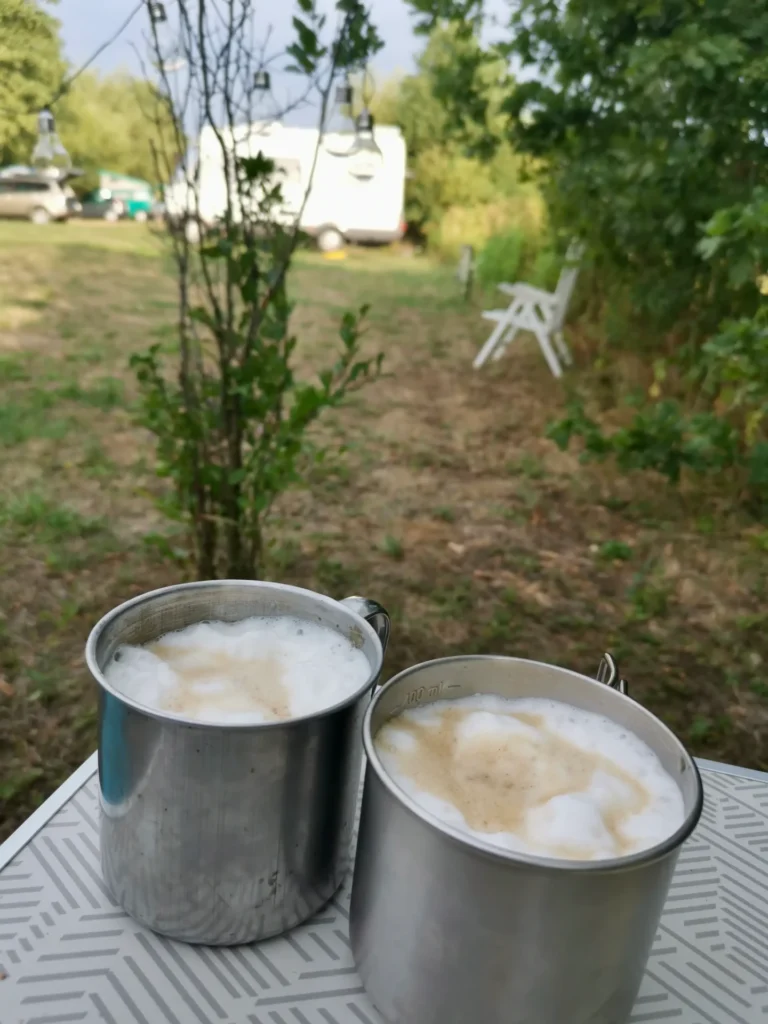
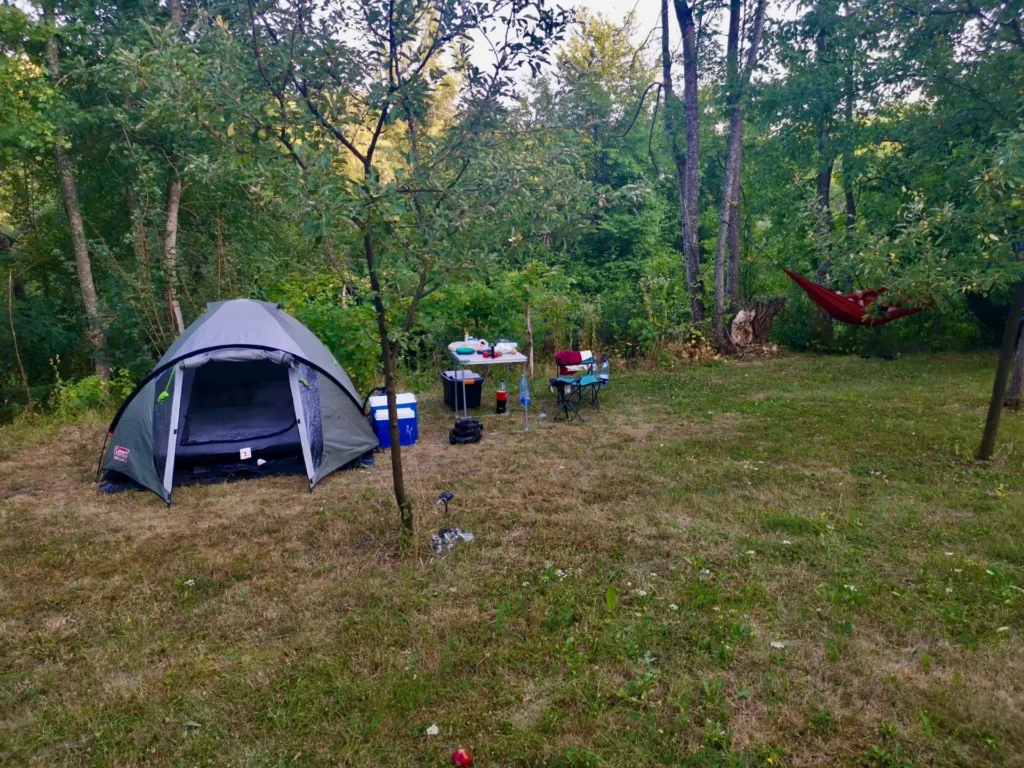
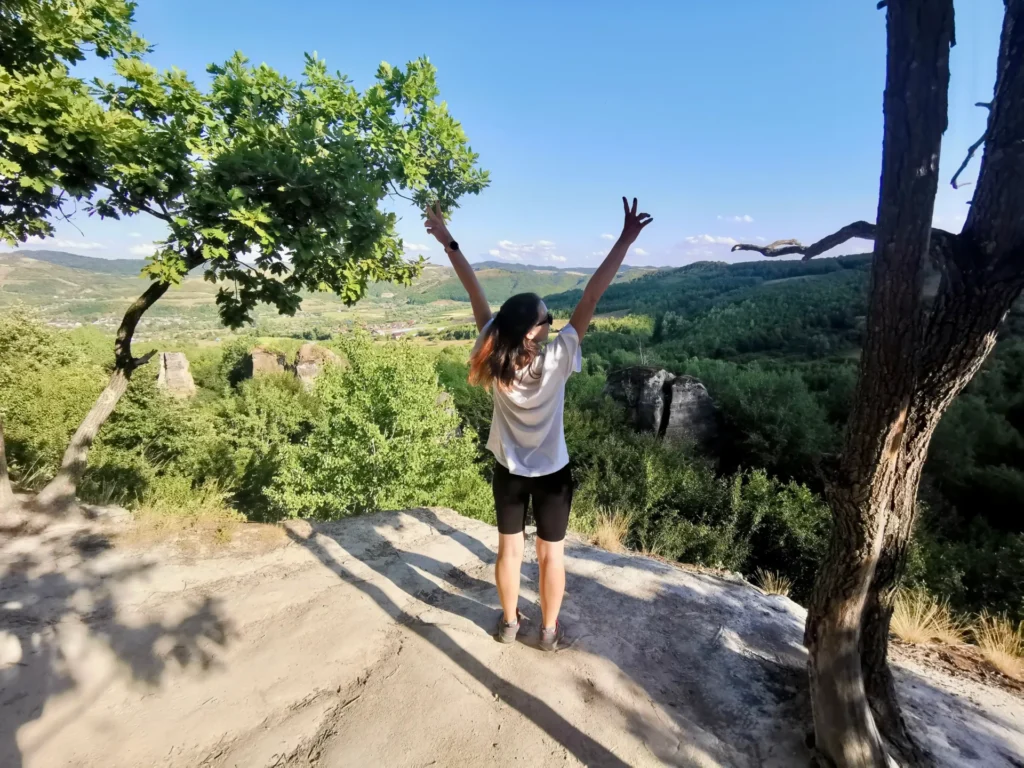
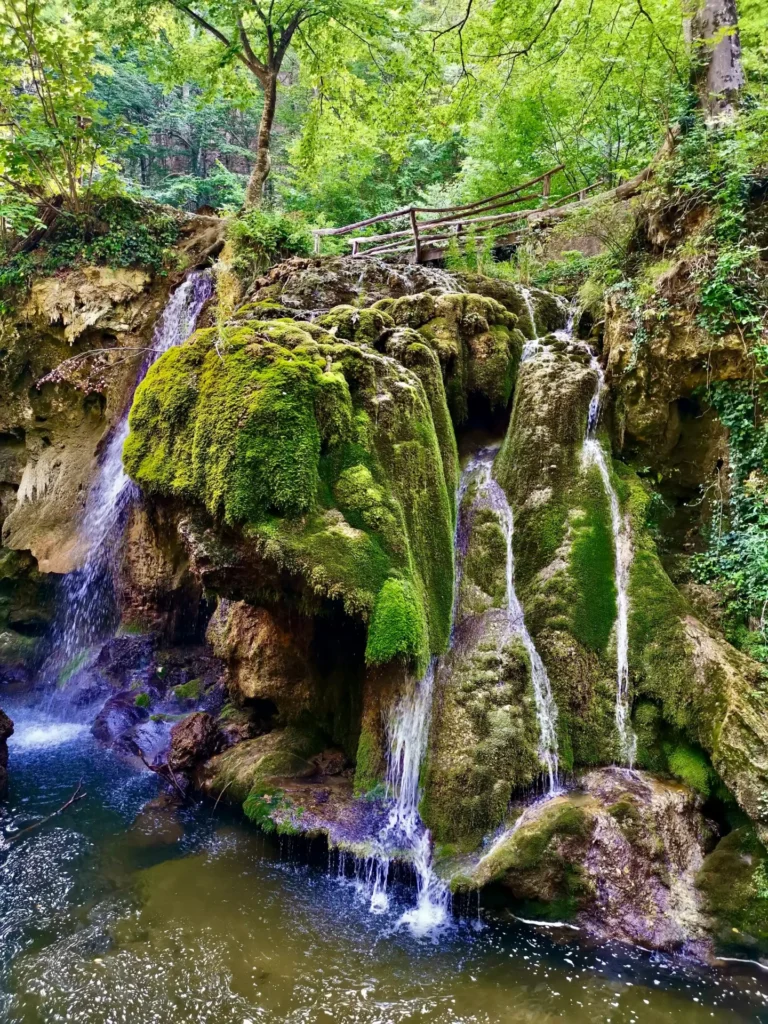
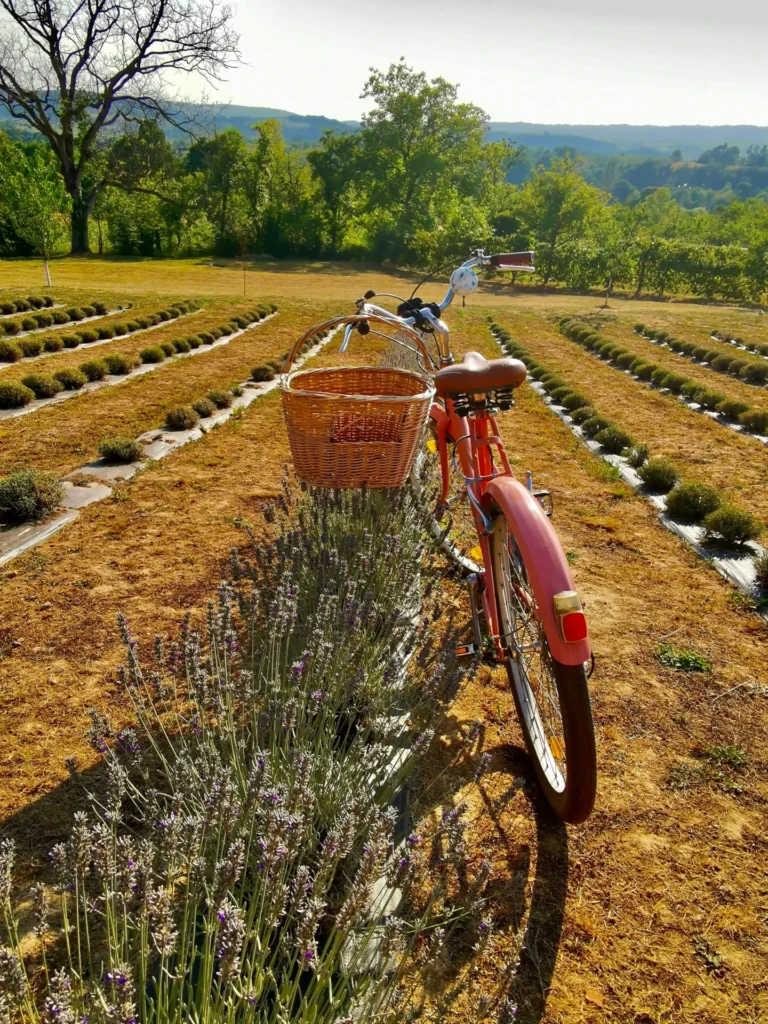
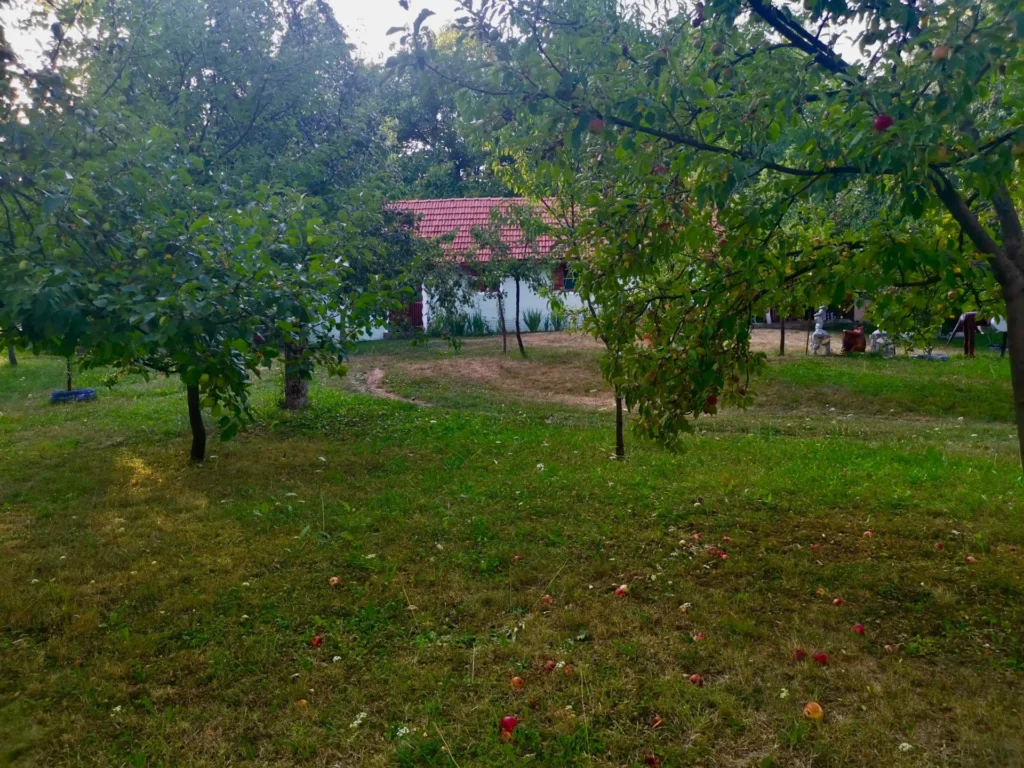
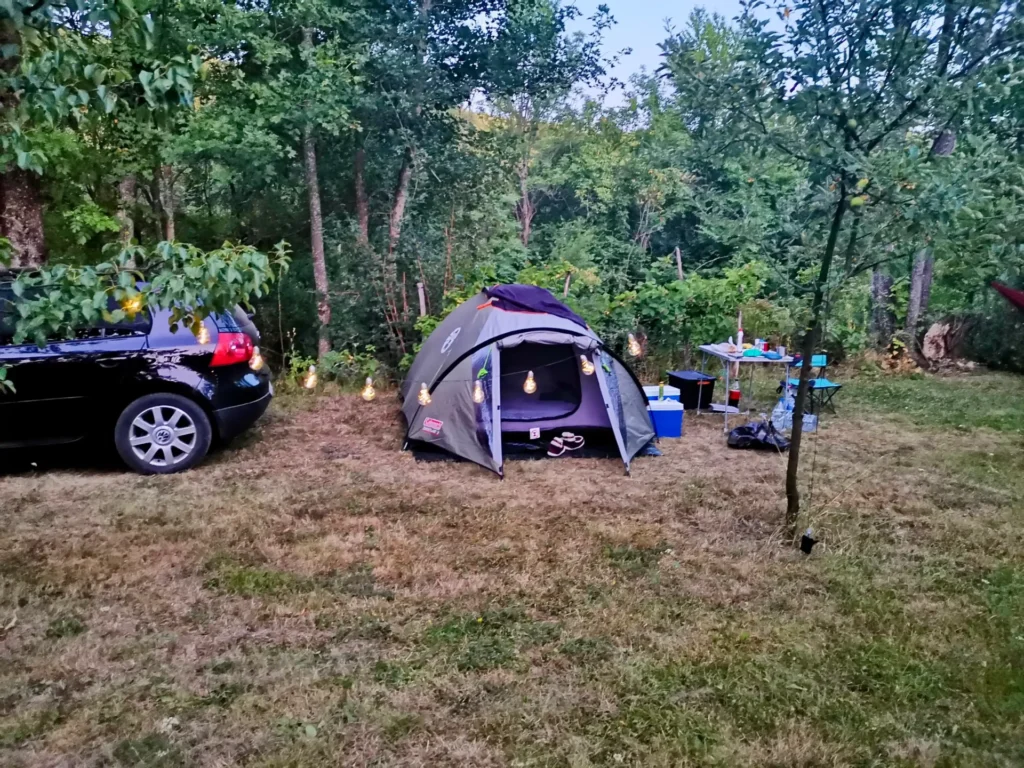
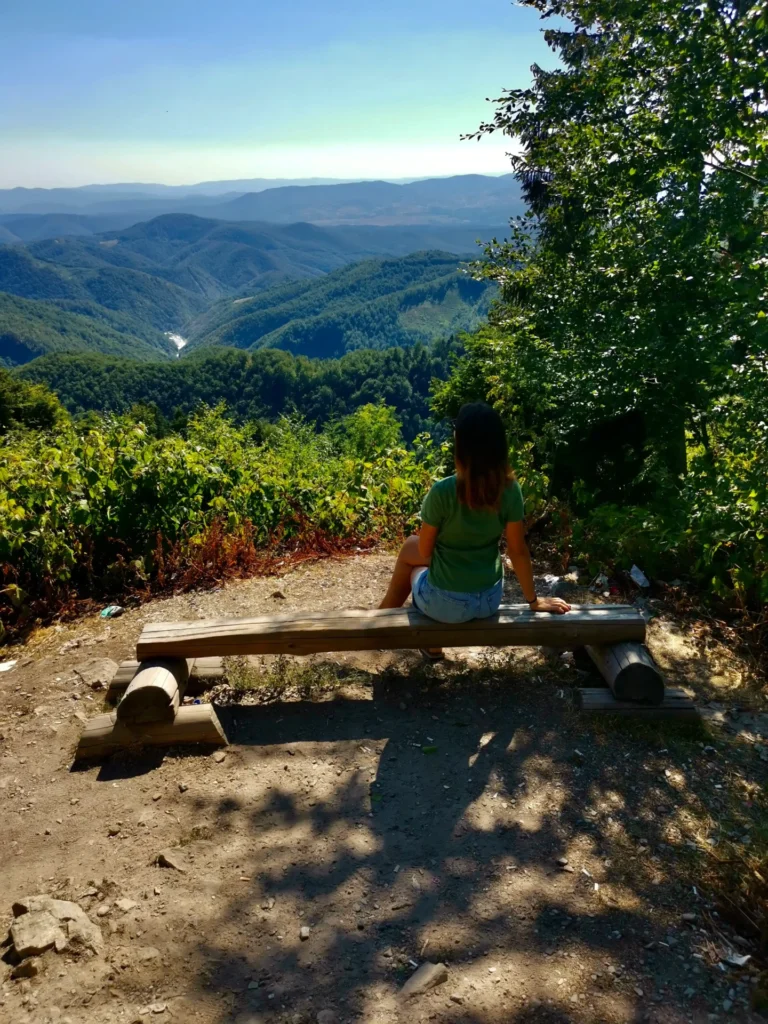
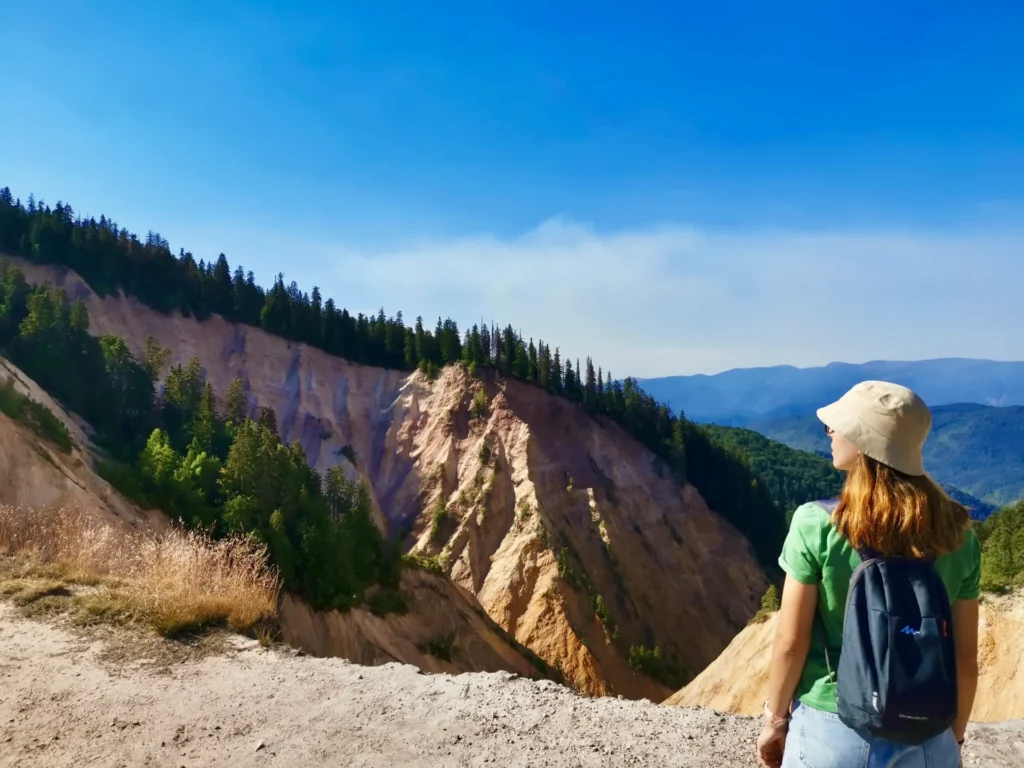
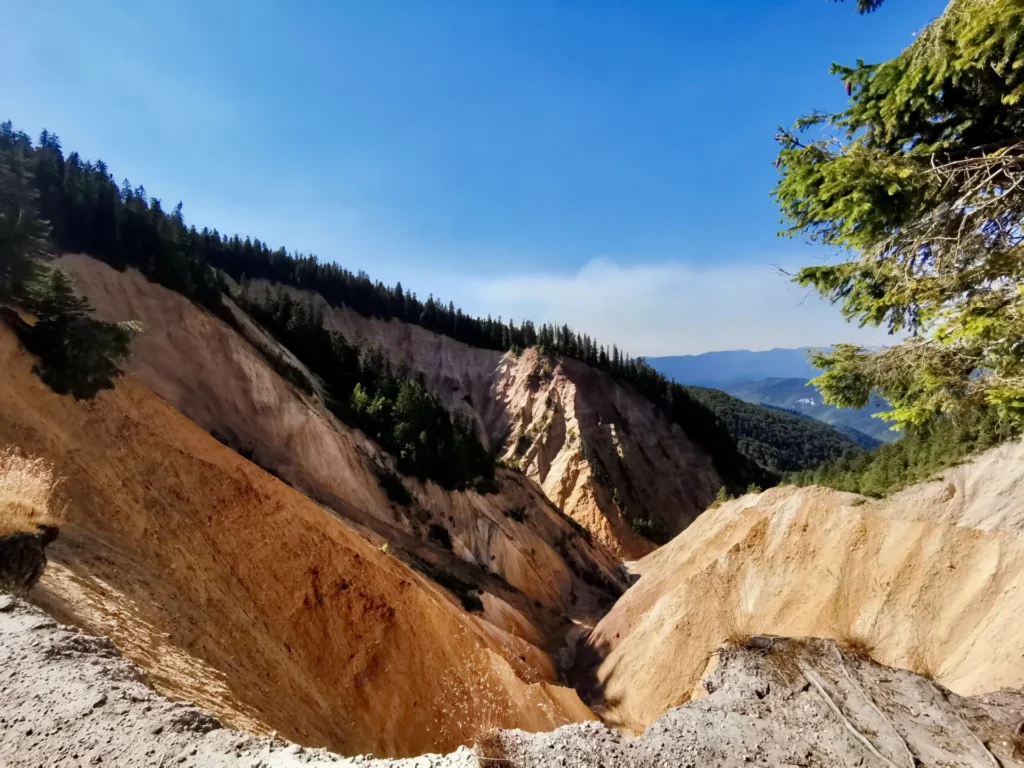
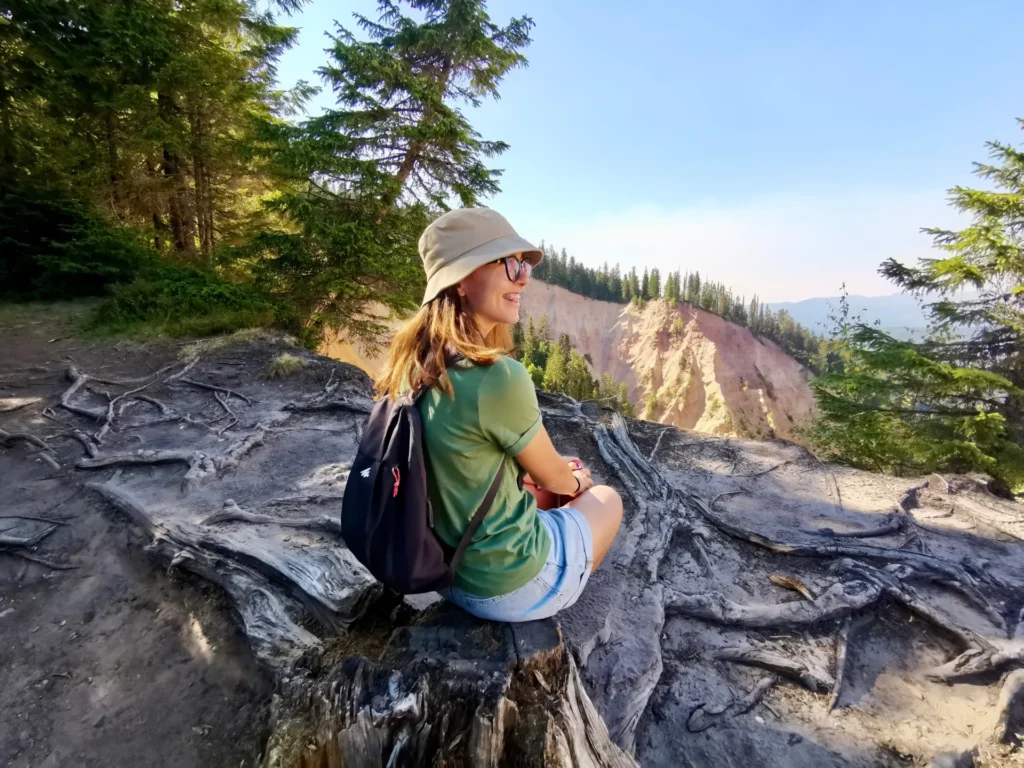
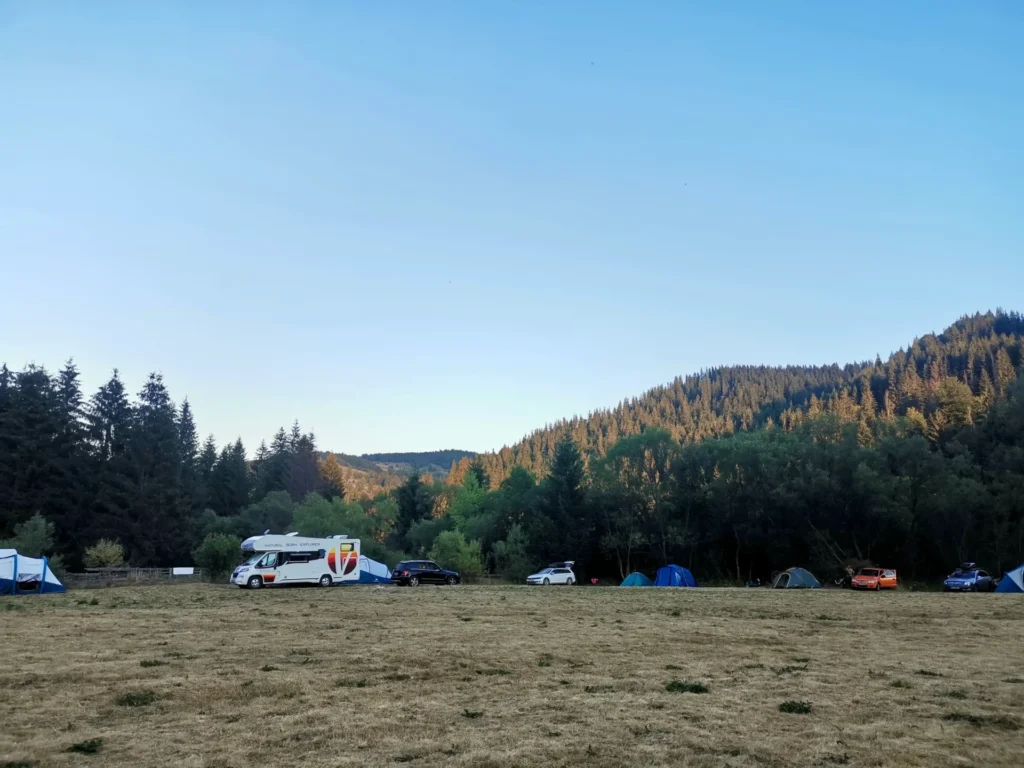
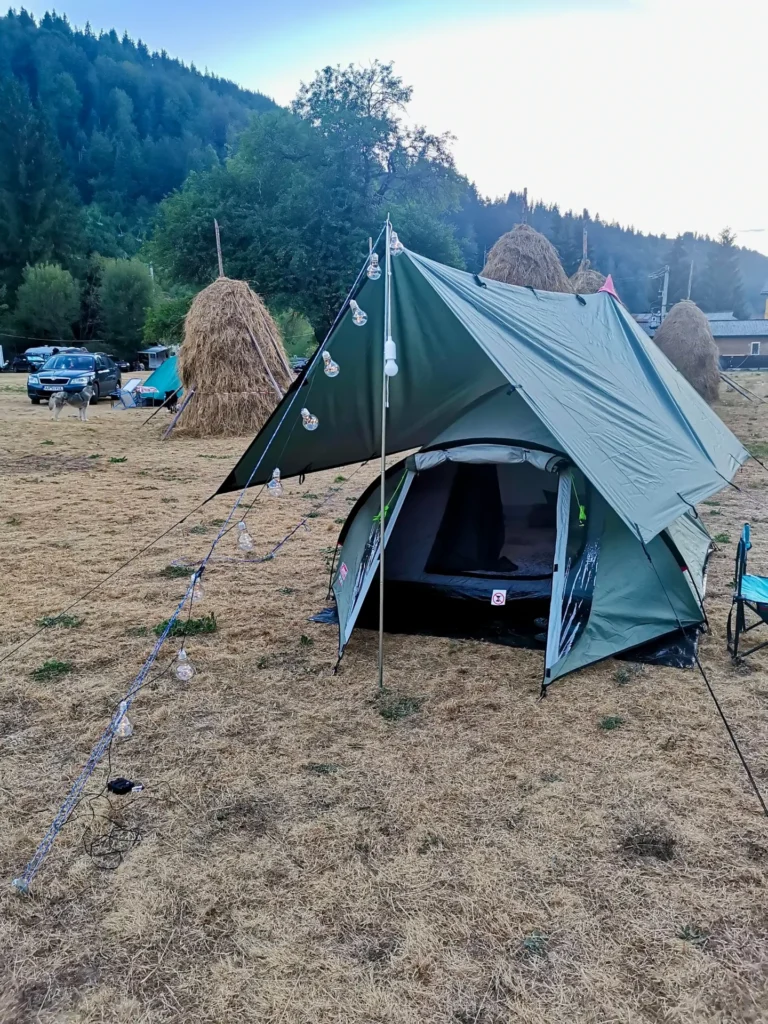
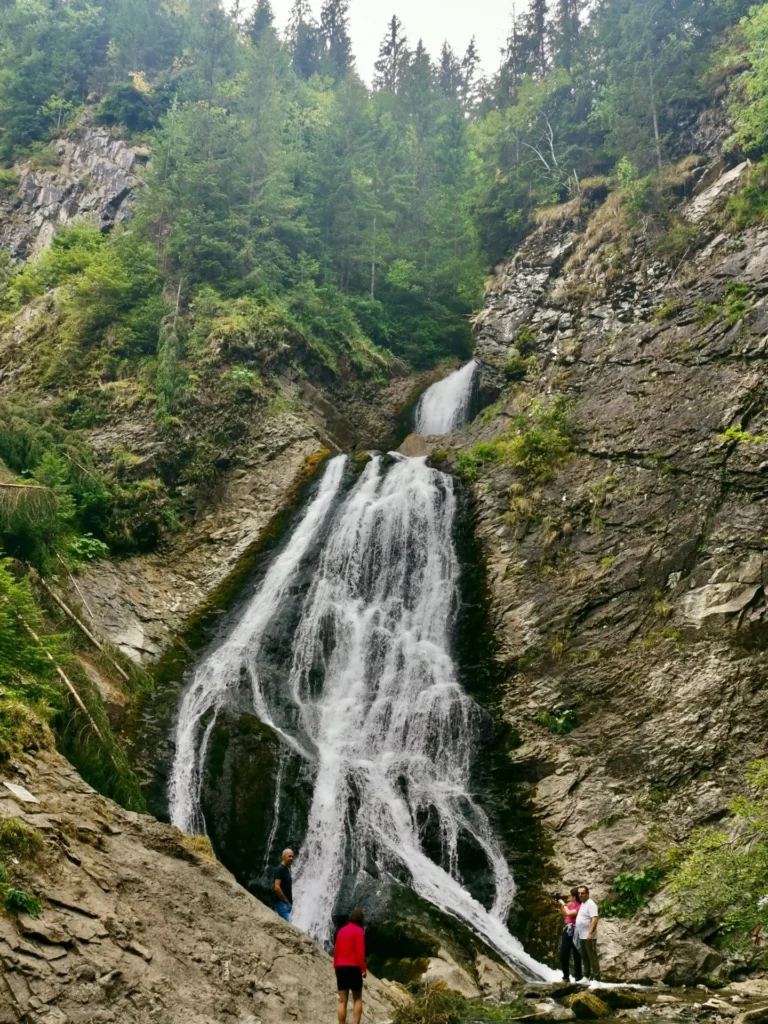
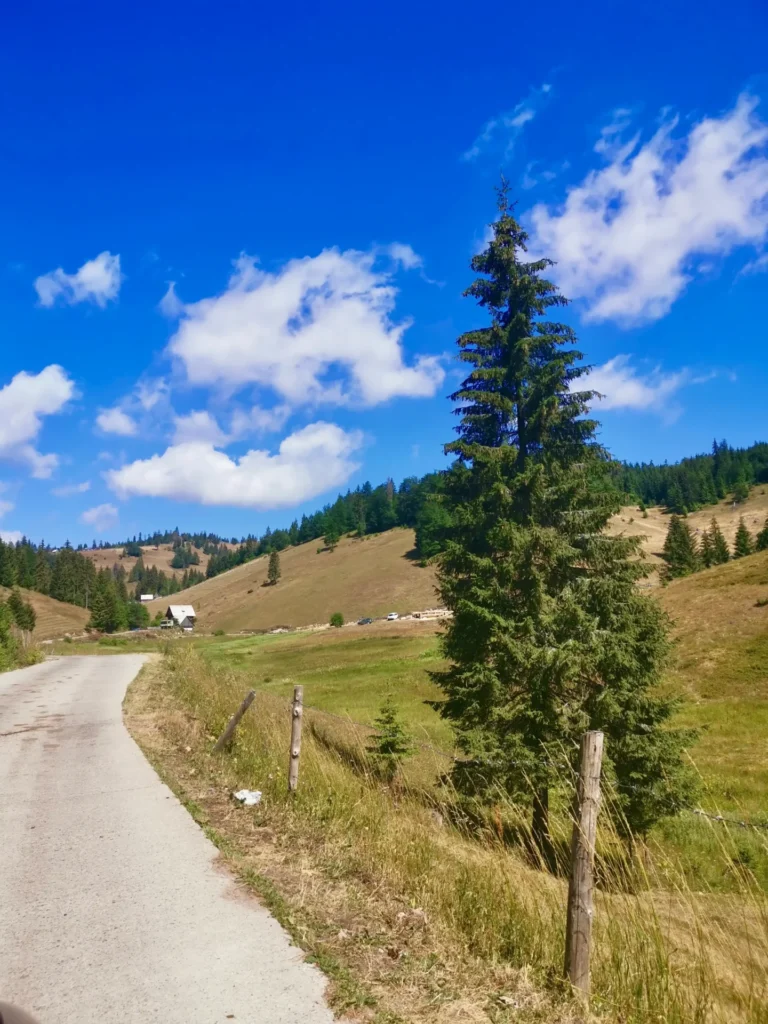
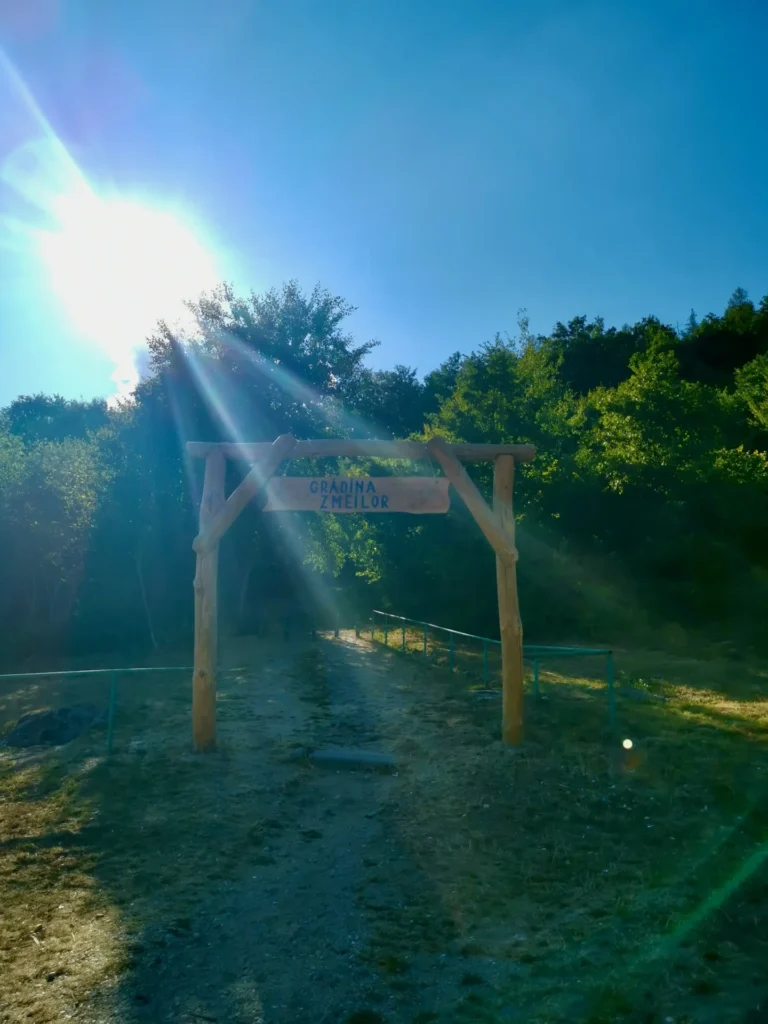
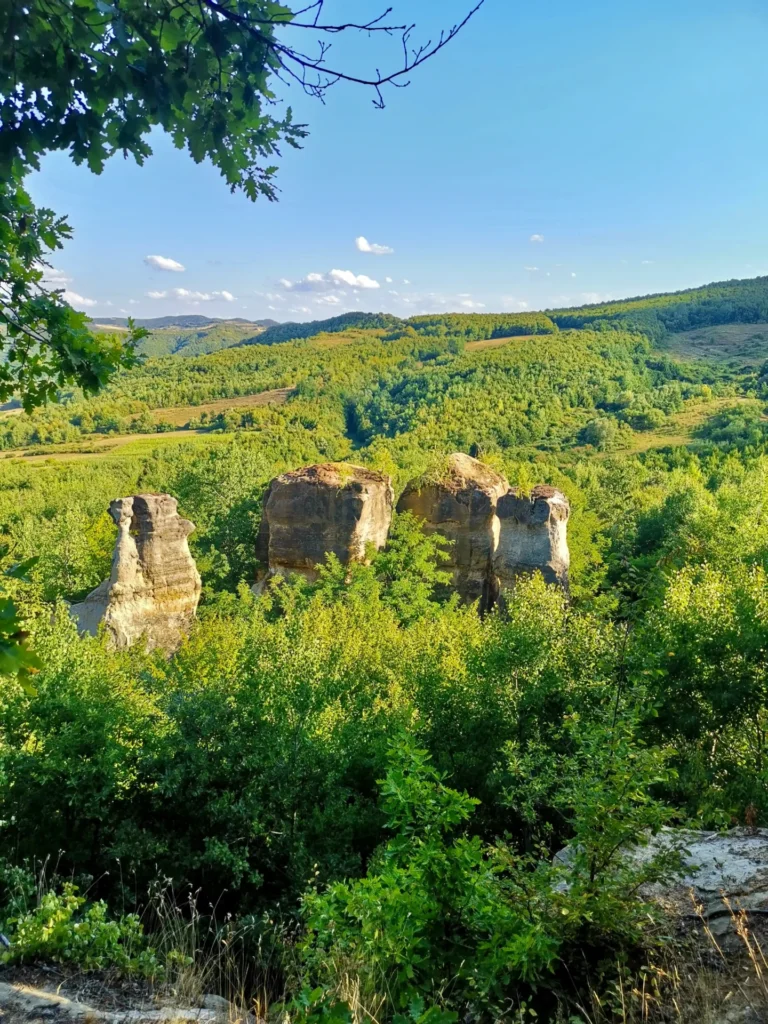
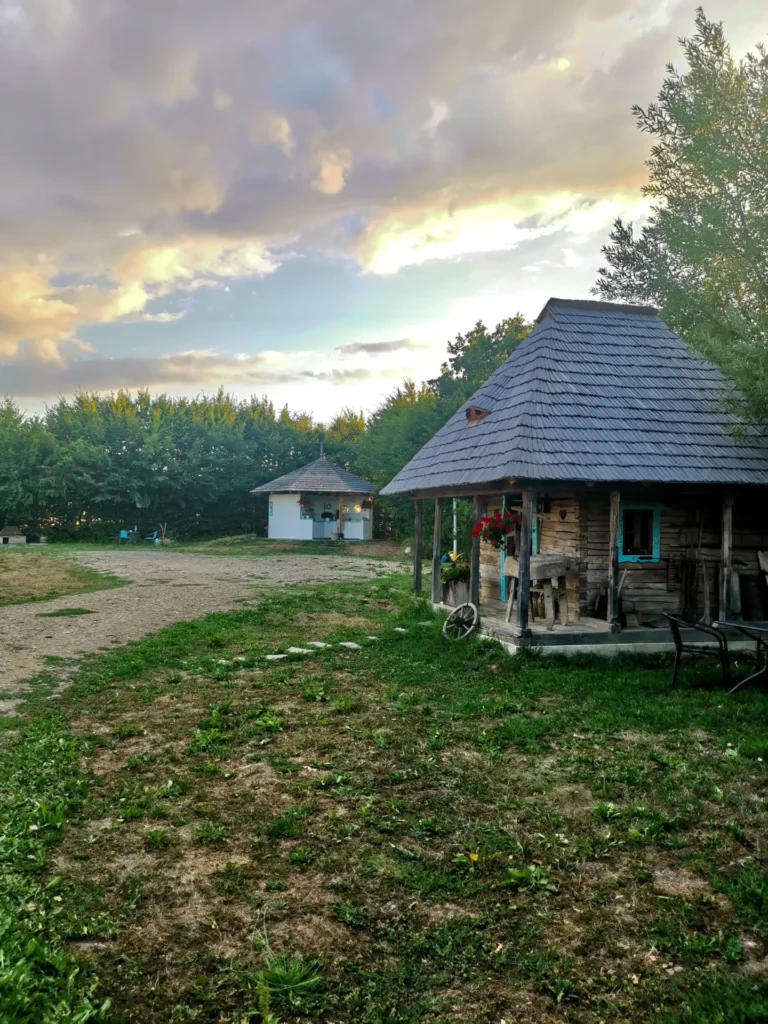
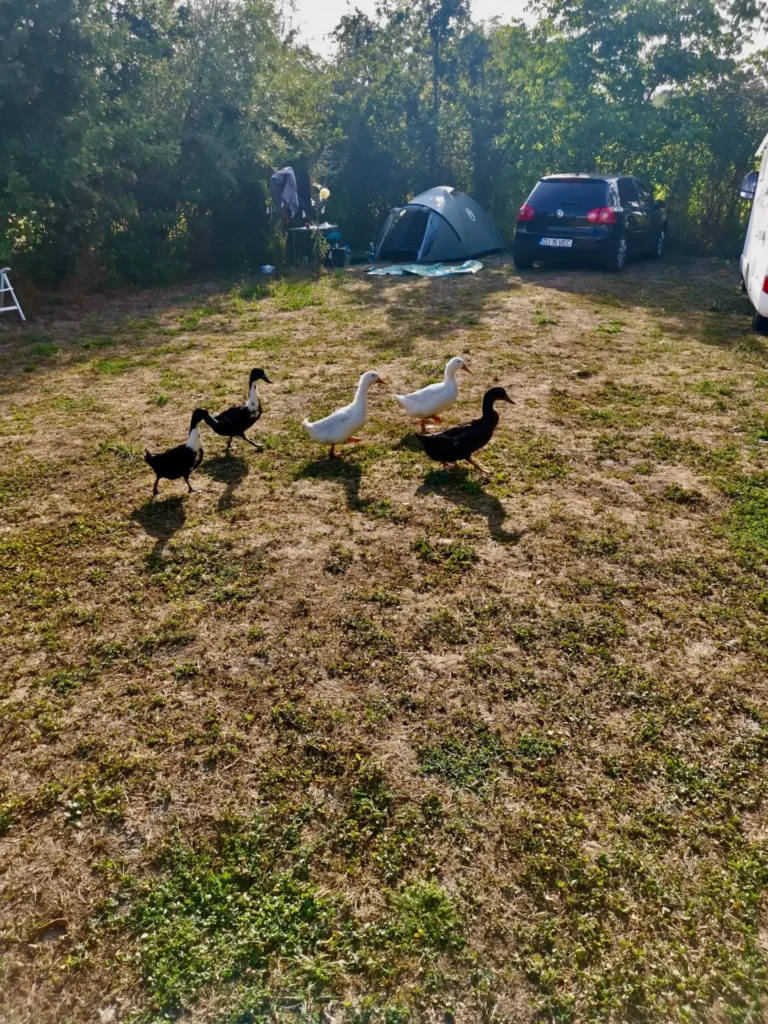
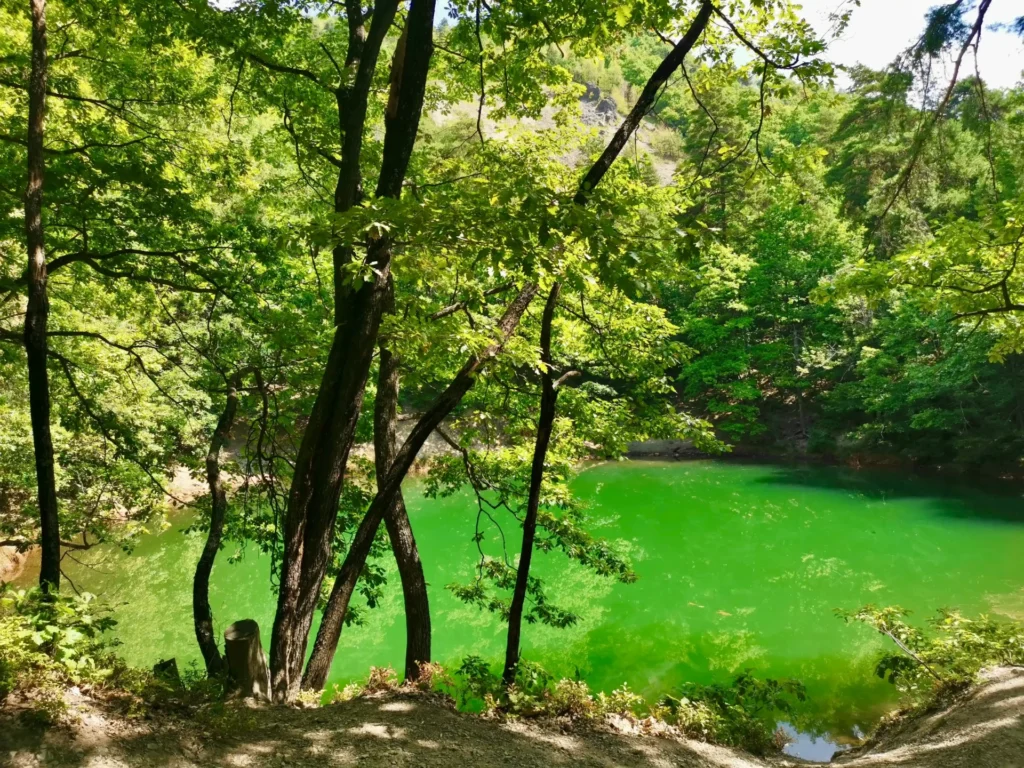
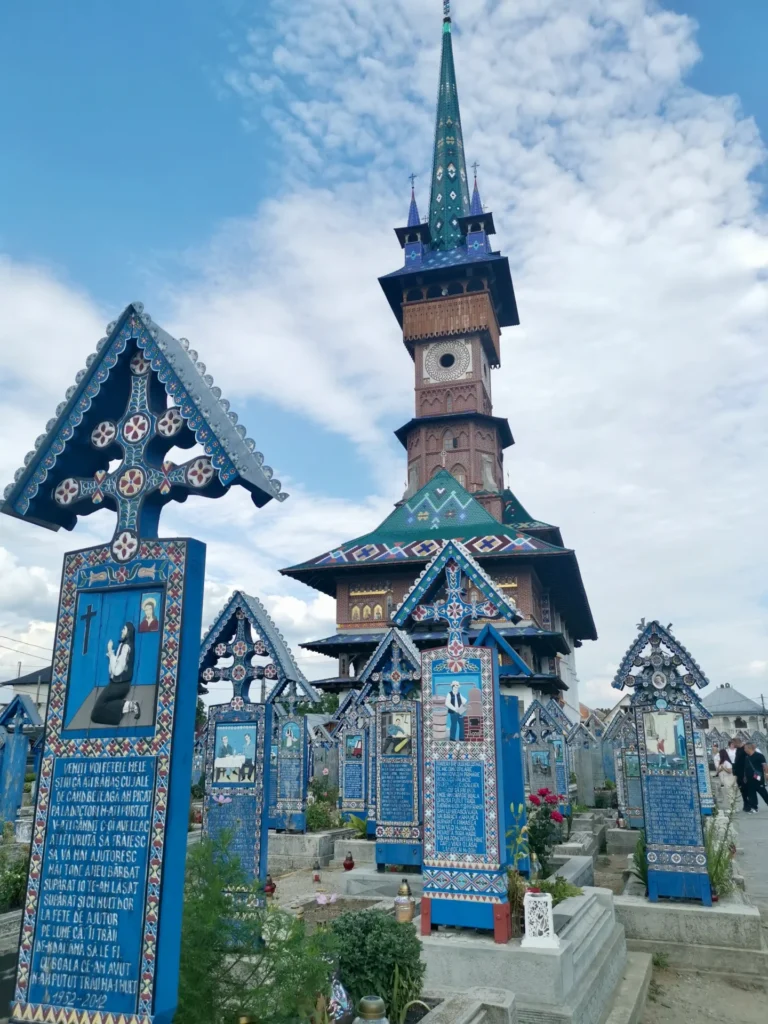
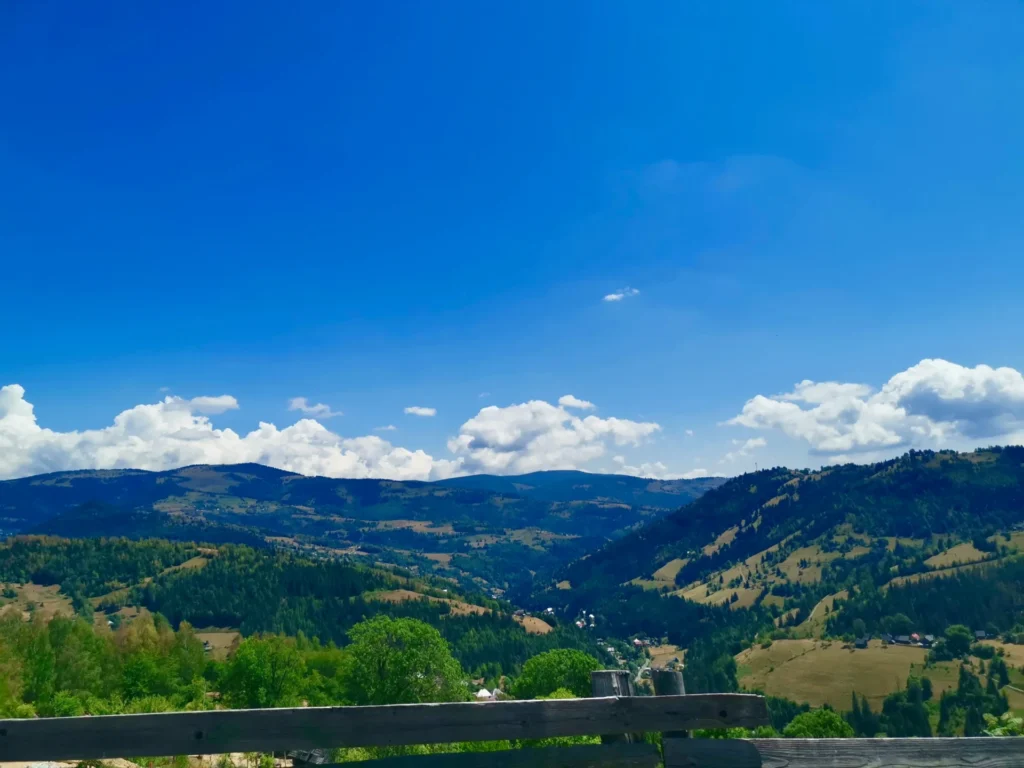
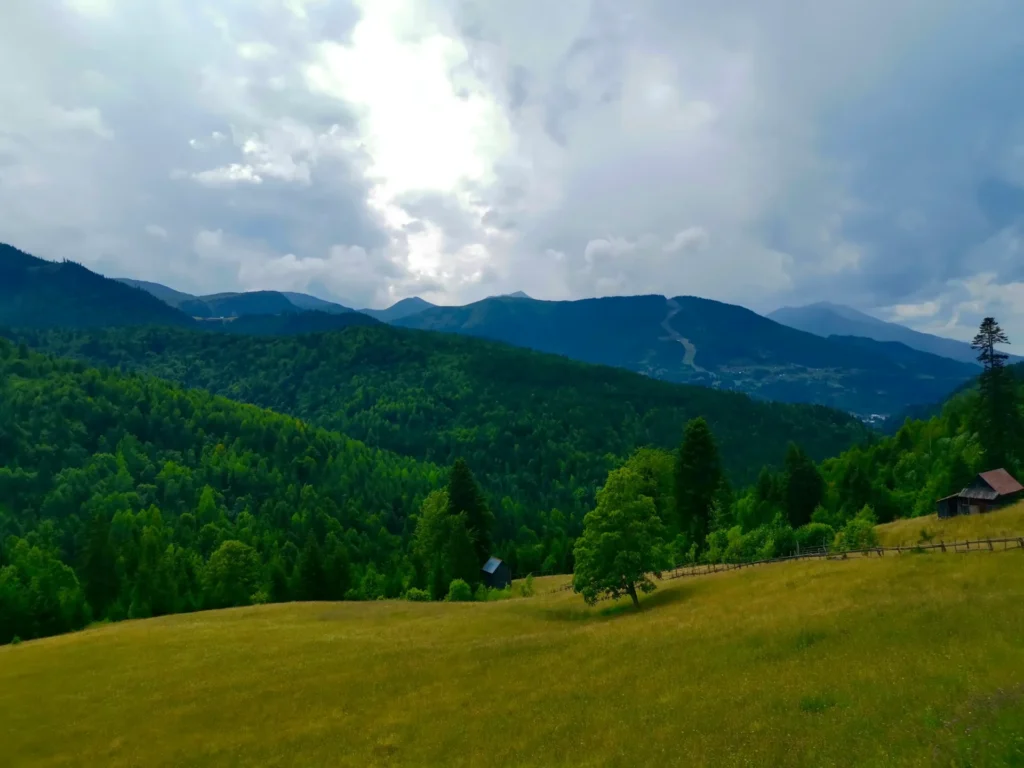
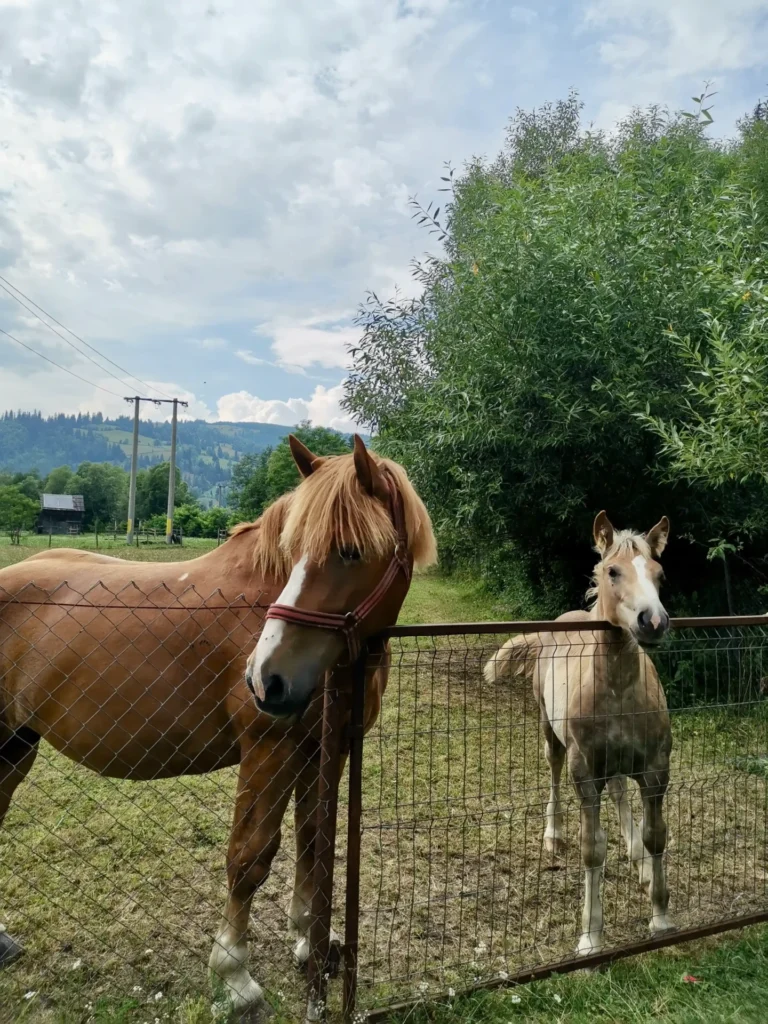
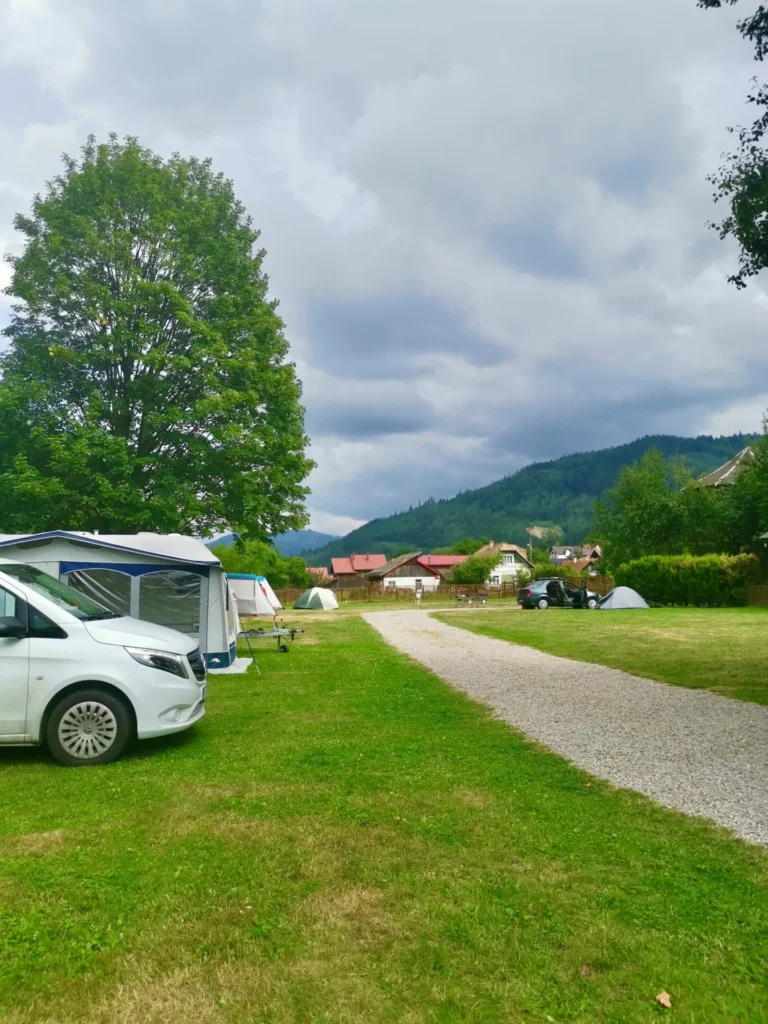
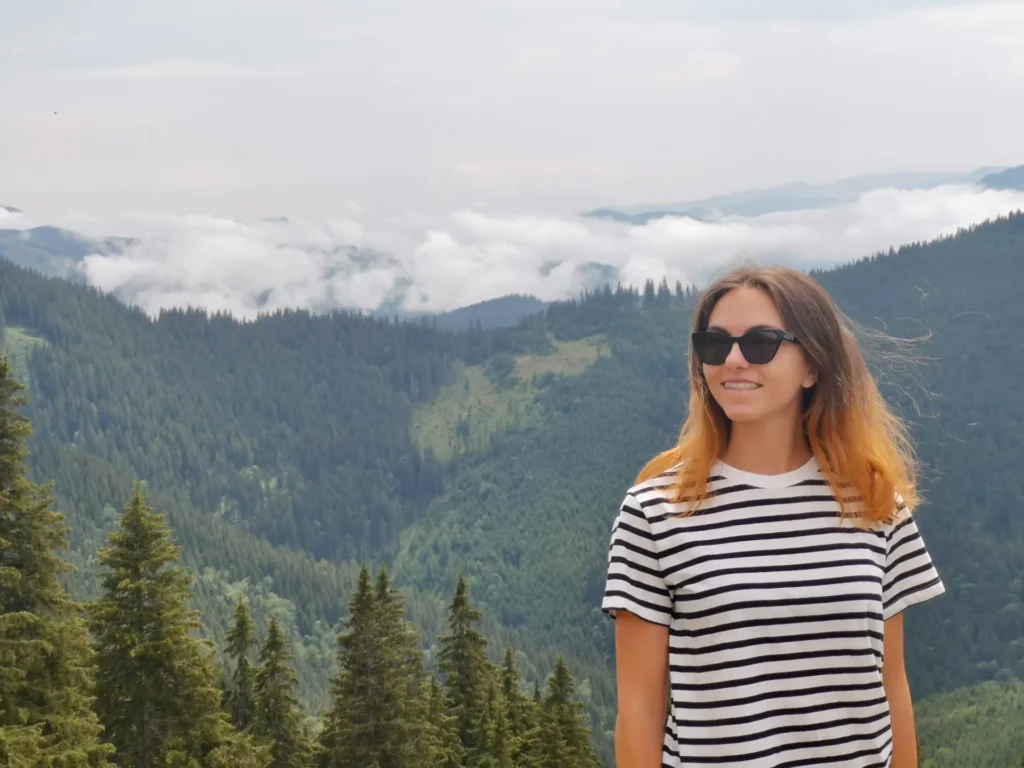
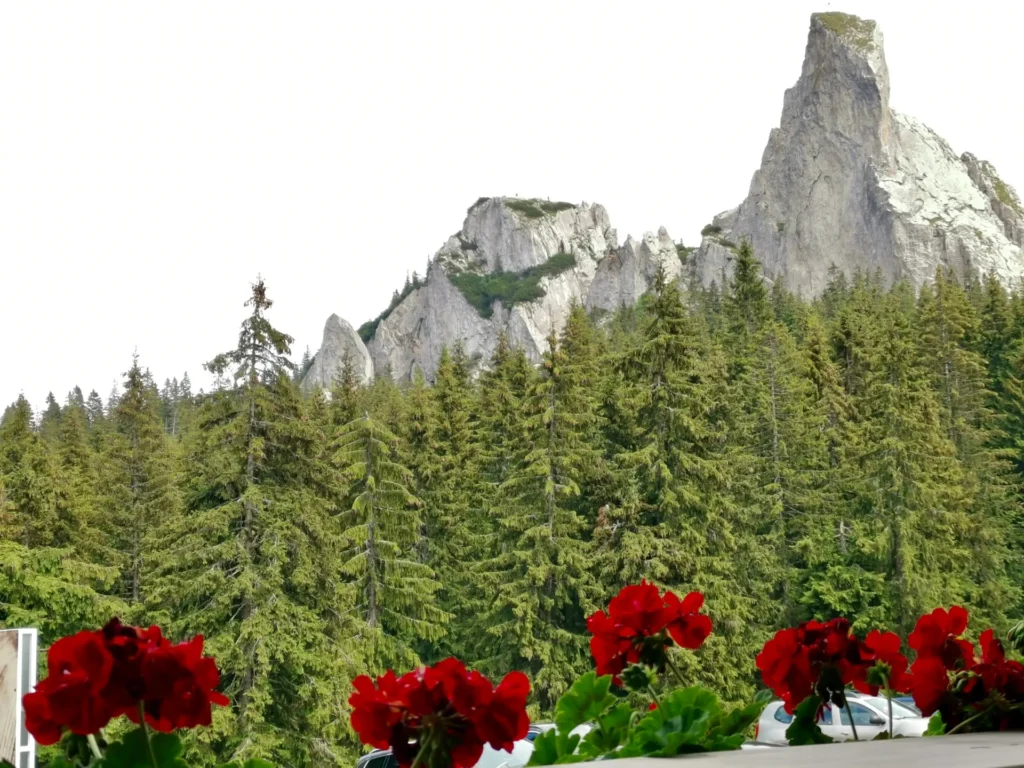
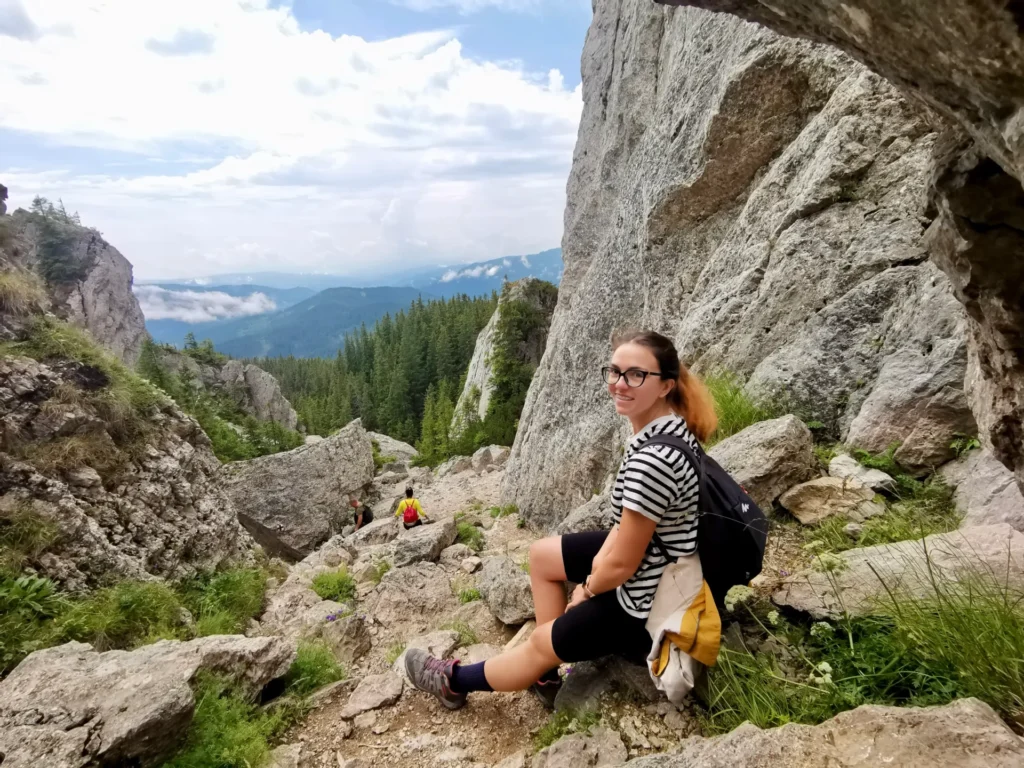
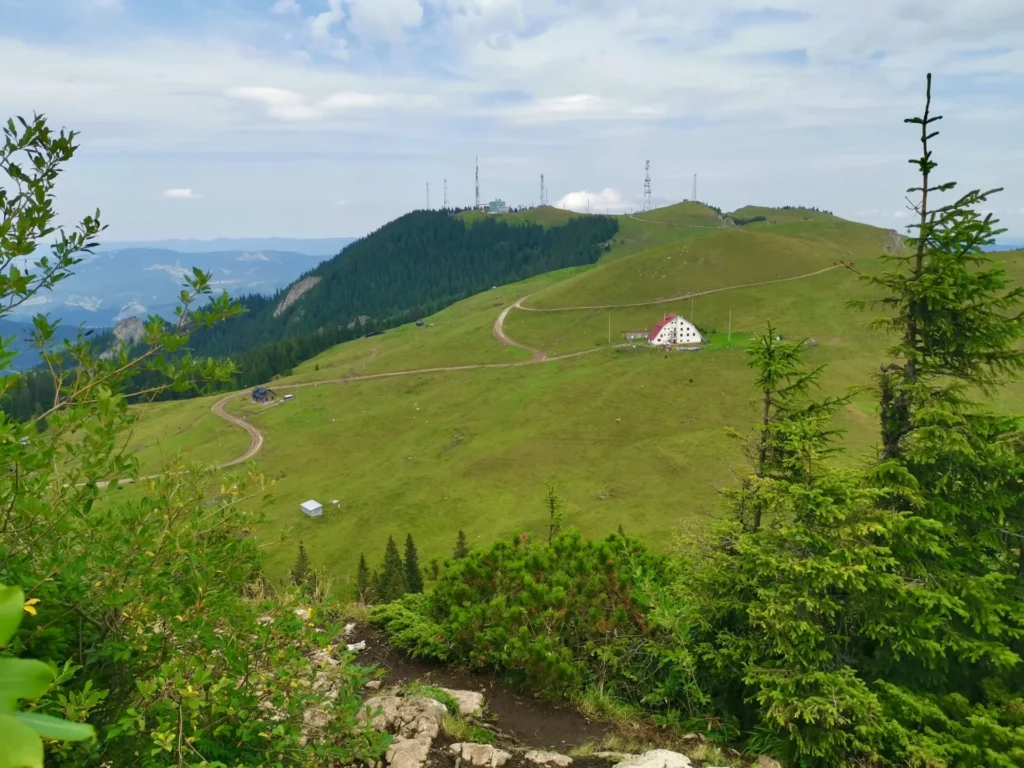
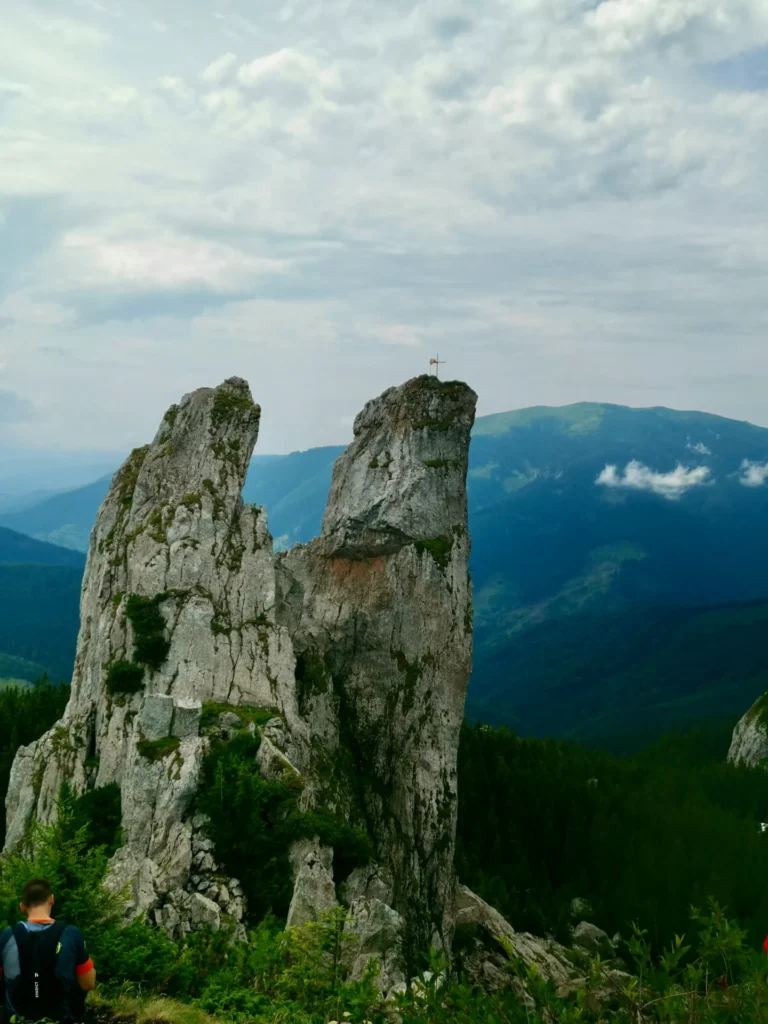
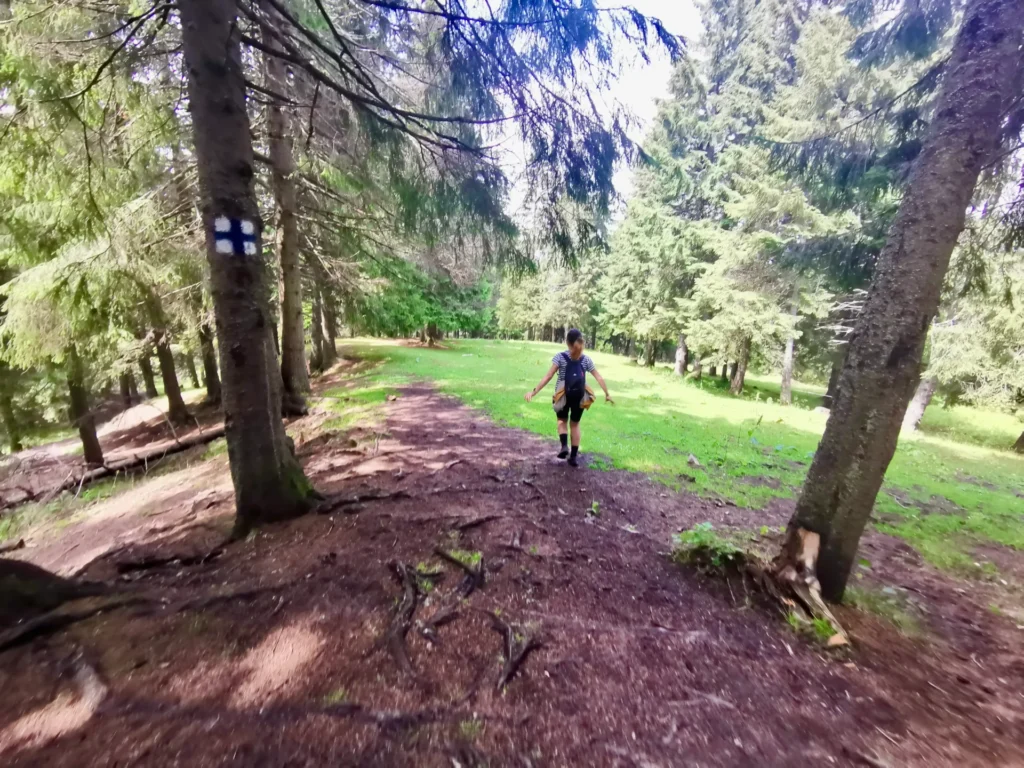
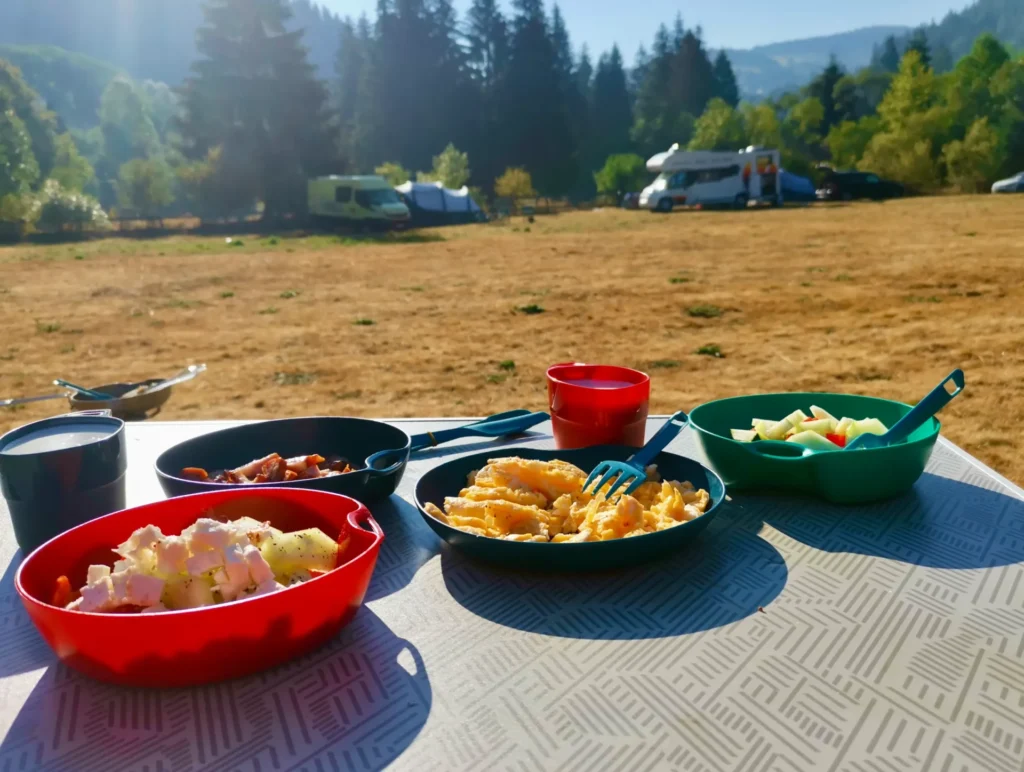
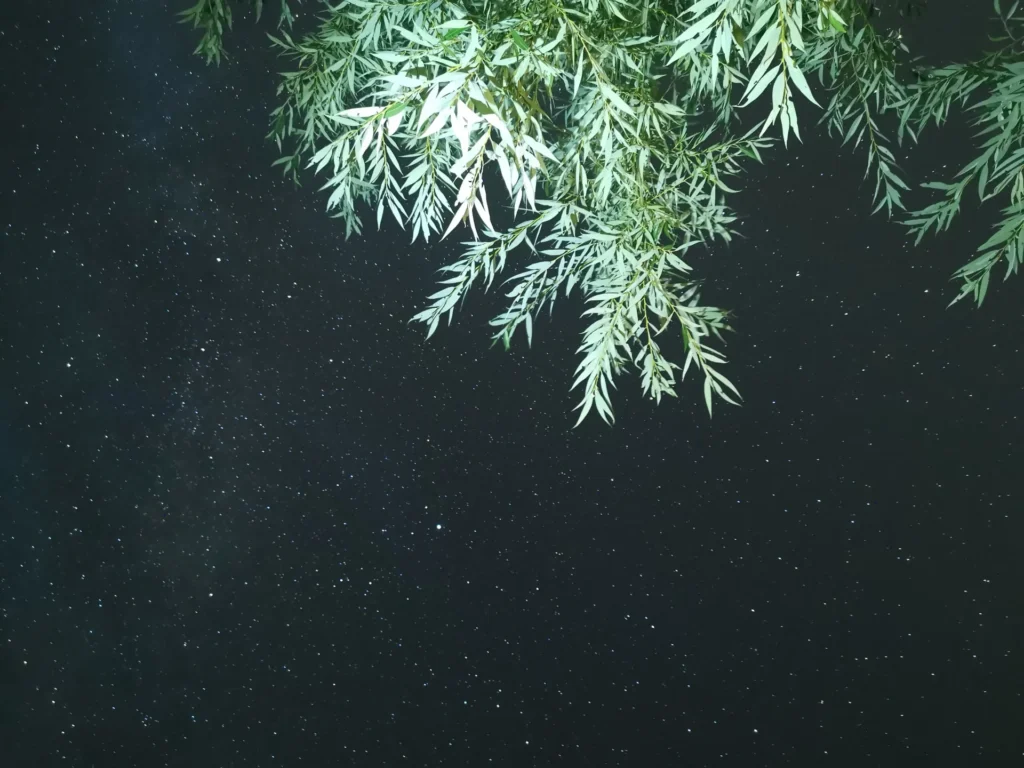
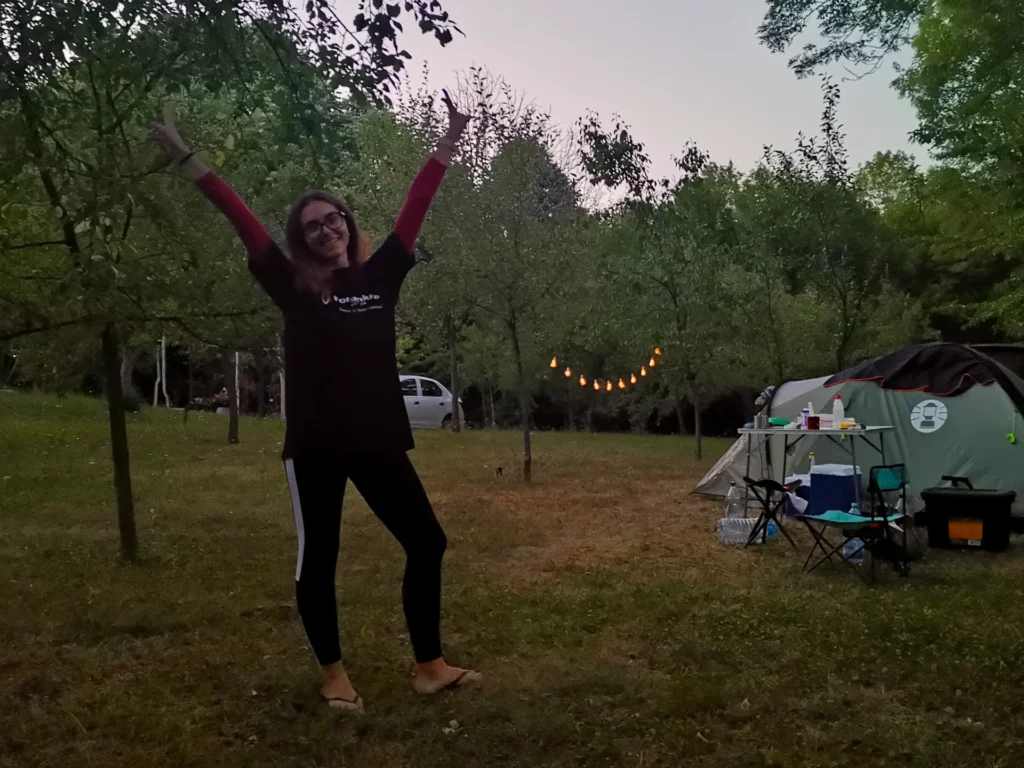
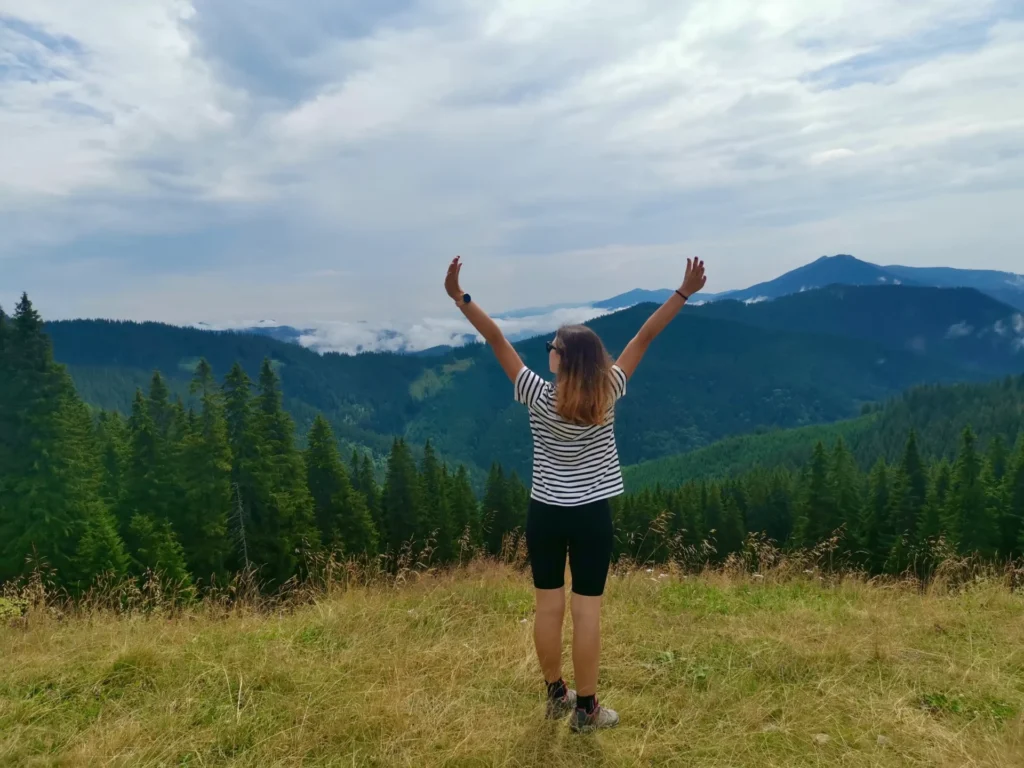
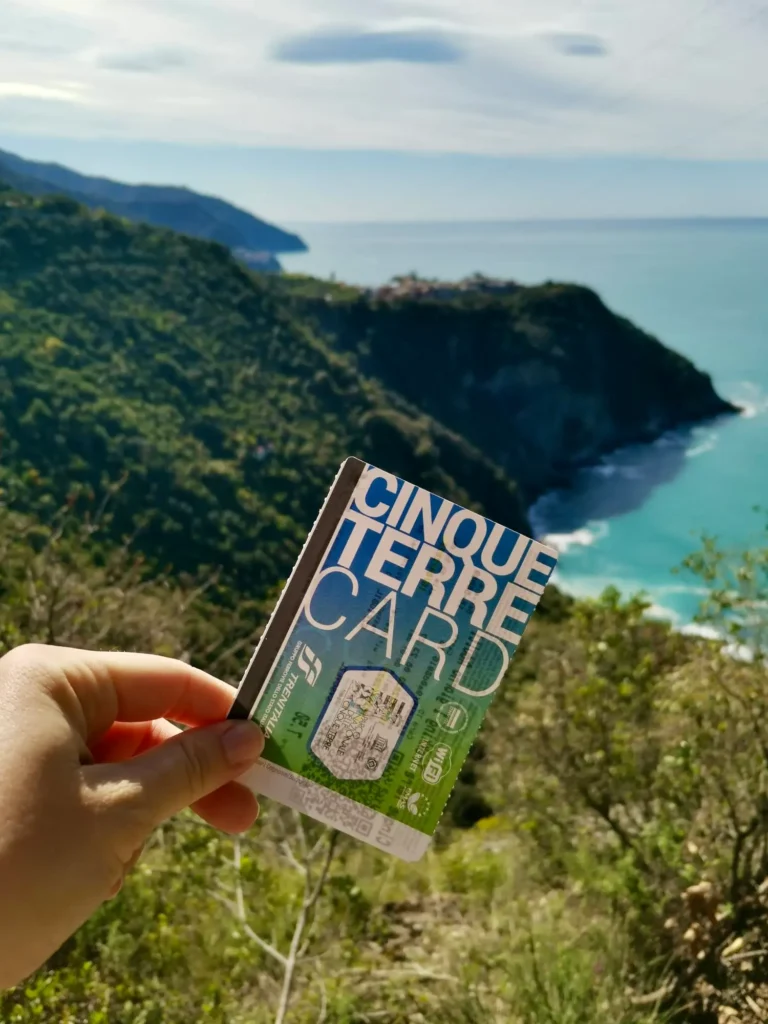
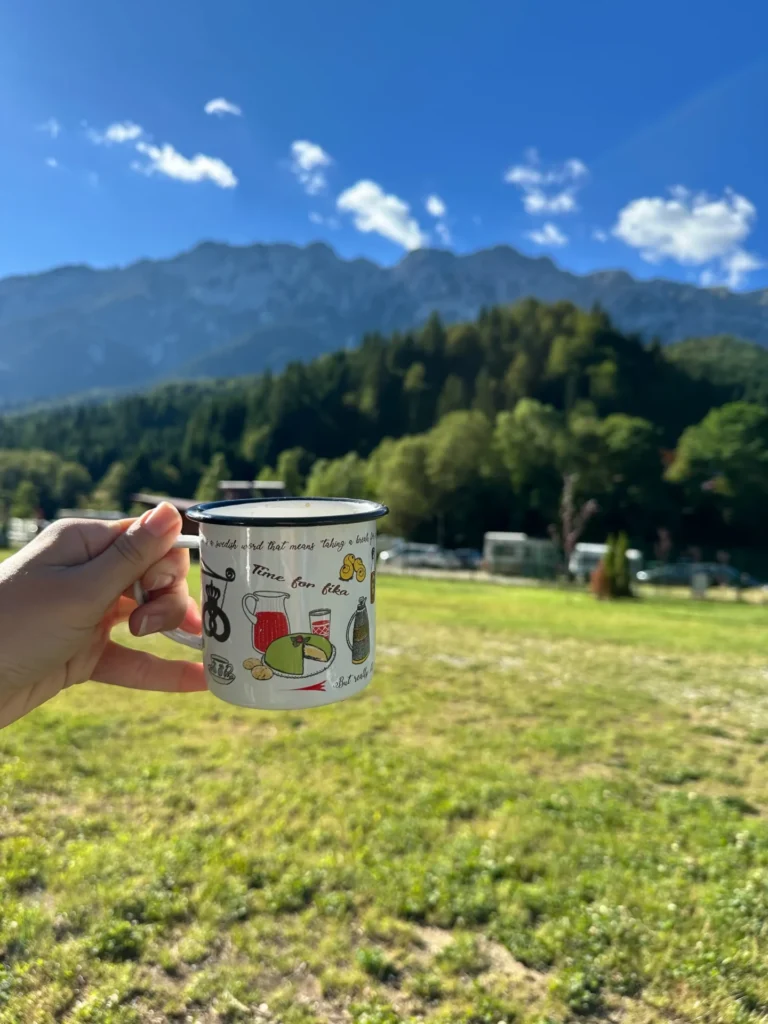
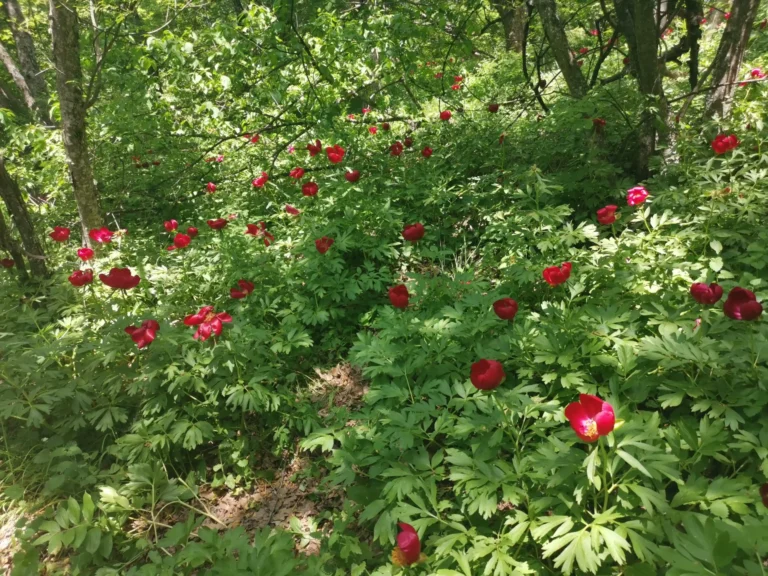
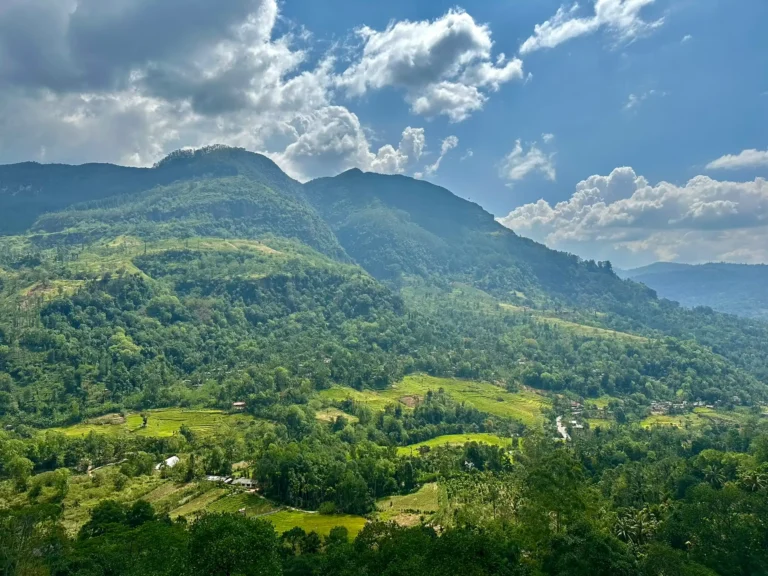


Ce articol interesant! Cred ca voi incepe sa ma gandesc mai serios sa calatoresc prin Romania astfel